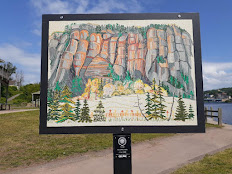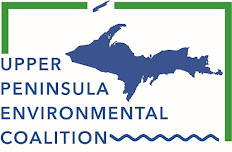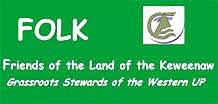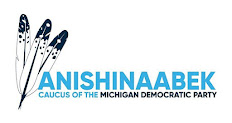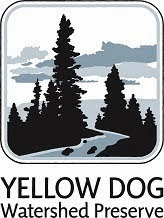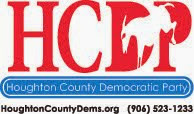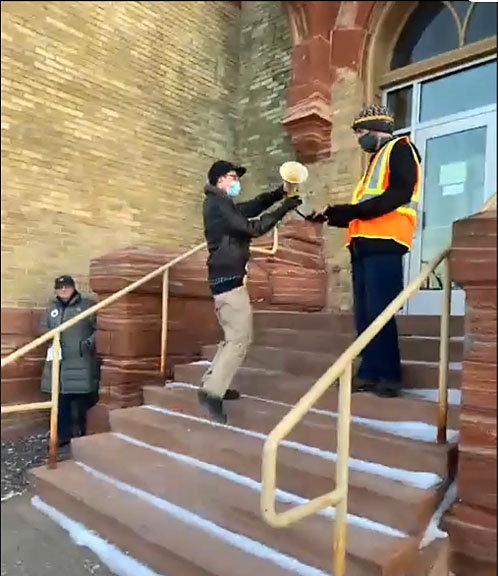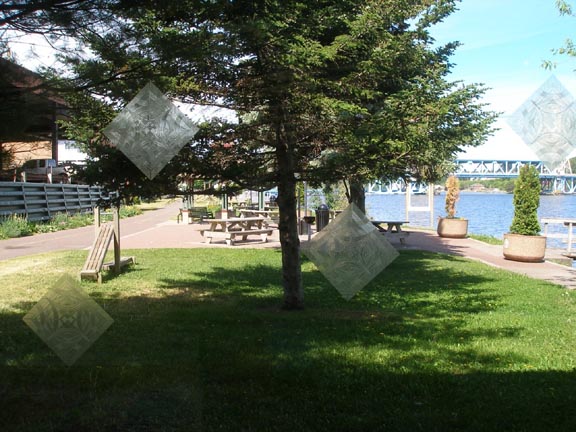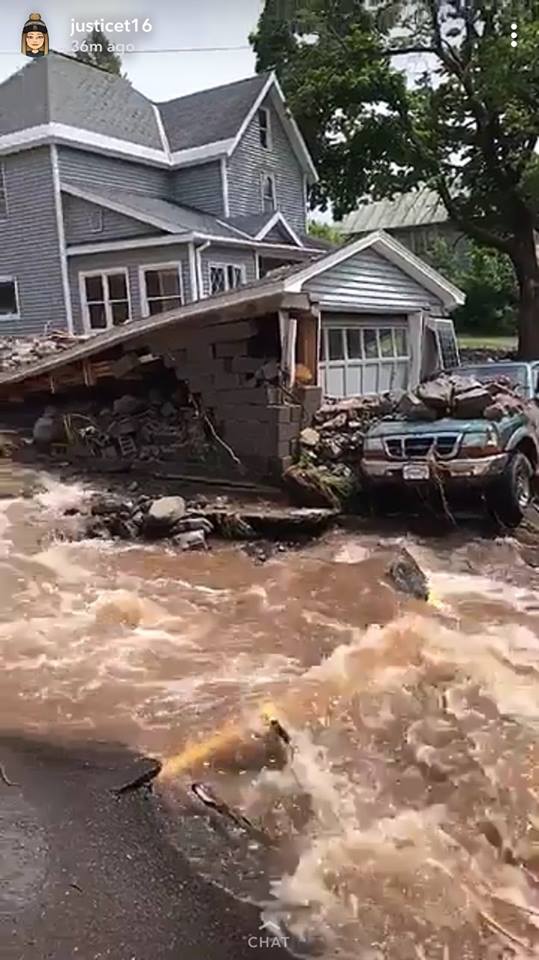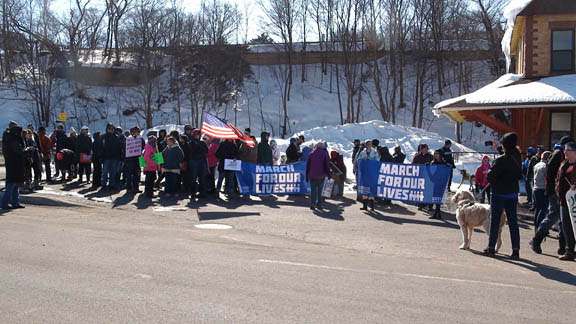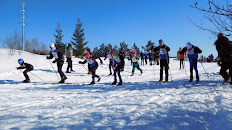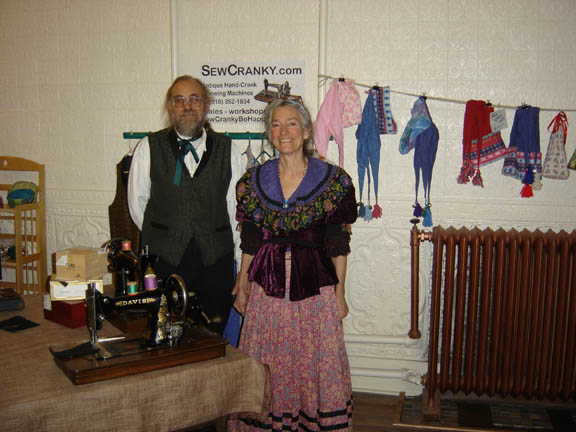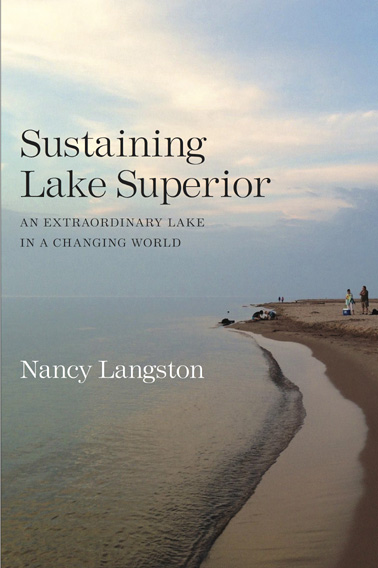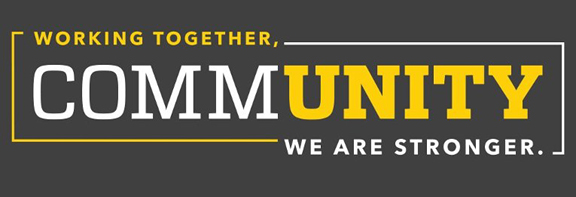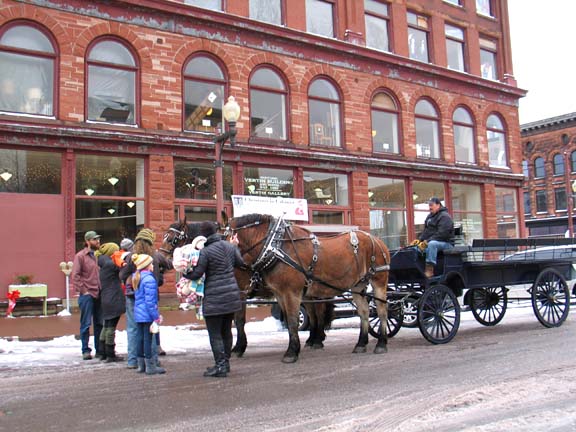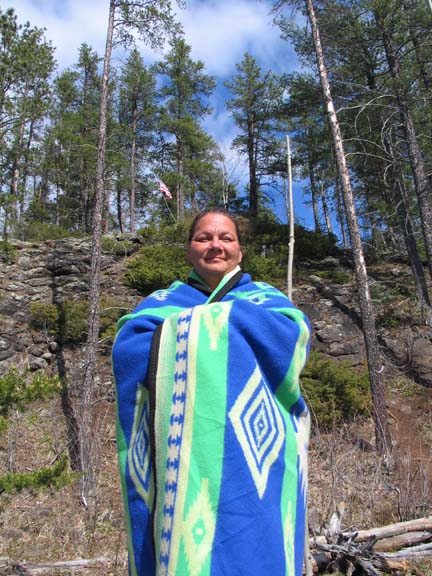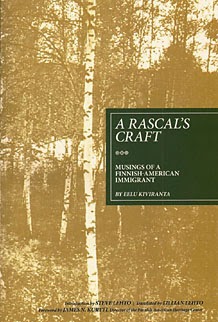From Michigan Public Service Commission:
LANSING -- The Michigan Public Service Commission (MPSC), on Dec. 27, ordered all rate-regulated utilities to report to the Commission on the impact passage of the new federal tax law will have on their customers.
Commission Chairman Sally Talberg said the special meeting was called to make sure the savings are calculated from the effective day of the federal legislation, which is Jan. 1, 2018.
The new law, signed by President Donald Trump on Dec. 22, is expected to reduce the amount utilities will pay in federal taxes.
"While regulatory accounting isn’t always the most headline-grabbing topic, the guidance the Commission is providing in today’s order is important because it maximizes our future options as we sort through the totality of impacts the new federal tax law will have when it takes effect Jan. 1," Commissioner Rachael Eubanks said on Dec. 27. "The information we receive in this docket will be incredibly useful in understanding the magnitude of the expected reduction in federal taxes that the utilities pay, which is likely to be significant. It will also provide broader input regarding the appropriate avenue for how to extend benefits to customers."
Utilities have until Jan. 19 to file their comments with the Commission (Case No. U-18494) on how they propose to return savings to ratepayers. Other interested parties will have until Feb. 2 to respond to utility proposals. The Commission will then determine how and when the savings will flow back to ratepayers.
Melissa Davis, Houghton Energy Efficiency Team (HEET) manager, whose work includes making people more comfortable while improving the efficiency of their homes, welcomed this announcement if it indeed means rate relief for utility customers.
"If our utility pays less in taxes, and they're mandated to pass those savings along to us, then bring it -- the sooner the better," Davis said.*
This MPSC order applies to Alpena Power Co.; Consumers Energy Co.; Detroit Thermal, LLC; DTE Electric Co.; DTE Gas Co.; Indiana Michigan Power Co.; Northern States Power Co.; Upper Peninsula Power Co.; Upper Michigan Energy Resources Corp.; Wisconsin Electric Power Co.; Presque Isle Electric and Gas Co-Op; Michigan Gas Utilities Corp.; and SEMCO Energy Gas Co.
For more information about the MPSC, please visit www.michigan.gov/mpsc or sign up for one of its listservs to keep up to date on MPSC matters.
DISCLAIMER: This document (press release) was prepared to aid the public’s understanding of certain matters before the Commission and is not intended to modify, supplement, or be a substitute for the Commission’s orders. The Commission’s orders are the official action of the Commission.
* Editor's Note: Visit the HEET Web site to learn about their work. Read also about Melissa Davis's New Power Tour, a local non-profit whose mission is to increase the use of renewable, water and energy-efficient technologies.
Saturday, December 30, 2017
Monday, December 25, 2017
Deadline for public comments on Lundin Mining request to amend Humboldt mining permit is Dec. 26, 2017
By Michele Bourdieu, with information from Michigan Dept. of Environmental Quality
Michigan Department of Environmental Quality (MDEQ) officials field questions and comments during the Nov. 27, 2017, public meeting on Lundin Mining's request to amend their (2010) Part 632 Mining Permit for the Humboldt Mill. Pictured here, from left, are Steve Casey, MDEQ Water Resources Division Upper Peninsula District supervisor; Melanie Humphrey, geological technician, and Joe Maki, geology specialist, both of MDEQ Oil, Gas, and Minerals Division, UP District. The deadline for public comments on this request is 5 p.m. Tuesday, Dec. 26, 2017. (Photo by Keweenaw Now)
MARQUETTE -- The Michigan Department of Environmental Quality (MDEQ) announced in their calendar for this week that Tuesday, Dec. 26, is the deadline for comments on Lundin Mining’s request to amend their Humboldt Mill Mining Permit MP 01 2010, issued to Eagle Mine under Part 632, Nonferrous Metallic Mineral Mining, of the Natural Resources and Environmental Protection Act, 1994 PA 451, as amended. Lundin is requesting approval to place tailings to a higher elevation in the Humboldt Tailings Disposal Facility (aka HTDF or the Humboldt Pit) than currently permitted. The MDEQ has determined that the request constitutes a significant change from the conditions of the approved 2010 mine permit, and as such the review of the request will proceed as for a new permit application.*
MDEQ held a public meeting on Lundin's request on Nov. 27, 2017, at the Westwood High School in Ishpeming. While the attendance was limited, MDEQ staff provided printed copies of Lundin's request and of the original Part 632 Mining Permit MP 01 2010 for the Humboldt Mill and fielded questions and comments from the audience.
During the MDEQ's Nov. 27 public meeting at Westwood High School in Ishpeming, Kathleen Heideman of the Upper Peninsula Environmental Coalition's (UPEC's) Mining Action Group, asks detailed questions concerning Lundin Mining's request to amend their Humboldt Mill Mining Permit. (Photo by Keweenaw Now)
The Humboldt Mill mining permit states, under Condition F.4, "The permittee shall utilize the HTDF for subaqueous tailings disposal.The surface elevation of tailings shall not exceed elevation 1420 feet mean sea level."**
In their Aug. 2, 2017, letter to MDEQ requesting an amendment to Condition F.4 in the permit, Lundin states the following: "The recent discovery of Eagle East resulted in an increase in estimated reserves and will result in an increase in associated tailings if approval to mine is received. Please note that this permit amendment request would have been required even without the contribution of Eagle East due to the additional ore reserves identified during delineation work at Eagle since operations have begun."***
Lundin states in their request that the subaqueous tailings peaks are calculated to reach a maximum elevation of approximately 1515 ft. mean sea level with a reasonable water cover of about 20-25 ft. at closure. The request for the 1515 ft. amendment to Condition F.4 includes several pages of details and diagrams, including limnology and geochemistry predictions and a treatment and containment plan.***
At the Nov. 27 public meeting, MDEQ staff said the deadline for comments on the amendment request would be followed by a 28-day review. Once MDEQ has issued a proposed decision, a public hearing would be required.
The public may still email comments to DEQMining-Comments@michigan.gov, including "Humboldt Mill Amendment Request" as the subject.
Notes:
UPDATE: Joe Maki said at the Nov. 27 meeting that comments received after the deadline would also be considered.
* The announcement of the Dec. 26 comment deadline can be found on the MDEQ Calendar for this week. (Please note that the meeting site mentioned refers to the Nov. 27 public meeting held at Westwood High School.)
** Click here for the MDEQ's Non-Ferrous Metallic Mining page with links to permits and click on Humboldt Mill Permit for the pdf document (27 pages).
*** Click here for Lundin's Aug. 2, 2017, amendment request. A Nov. 20, 2017, letter from MDEQ to Eagle Mine confirms the agency's final decision to grant Eagle Mine's request to amend Mining Permit MP 01 2007 to include development of the Eagle East mineral resource under the provisions of Part 632. However this decision does not authorize final deposition of Eagle East tailings into the Humboldt Tailings Disposal Facility. This Nov. 20th letter is linked on the Non-Ferrous Metallic Mining page under Eagle East Permit Amendment.
Michigan Department of Environmental Quality (MDEQ) officials field questions and comments during the Nov. 27, 2017, public meeting on Lundin Mining's request to amend their (2010) Part 632 Mining Permit for the Humboldt Mill. Pictured here, from left, are Steve Casey, MDEQ Water Resources Division Upper Peninsula District supervisor; Melanie Humphrey, geological technician, and Joe Maki, geology specialist, both of MDEQ Oil, Gas, and Minerals Division, UP District. The deadline for public comments on this request is 5 p.m. Tuesday, Dec. 26, 2017. (Photo by Keweenaw Now)
MARQUETTE -- The Michigan Department of Environmental Quality (MDEQ) announced in their calendar for this week that Tuesday, Dec. 26, is the deadline for comments on Lundin Mining’s request to amend their Humboldt Mill Mining Permit MP 01 2010, issued to Eagle Mine under Part 632, Nonferrous Metallic Mineral Mining, of the Natural Resources and Environmental Protection Act, 1994 PA 451, as amended. Lundin is requesting approval to place tailings to a higher elevation in the Humboldt Tailings Disposal Facility (aka HTDF or the Humboldt Pit) than currently permitted. The MDEQ has determined that the request constitutes a significant change from the conditions of the approved 2010 mine permit, and as such the review of the request will proceed as for a new permit application.*
MDEQ held a public meeting on Lundin's request on Nov. 27, 2017, at the Westwood High School in Ishpeming. While the attendance was limited, MDEQ staff provided printed copies of Lundin's request and of the original Part 632 Mining Permit MP 01 2010 for the Humboldt Mill and fielded questions and comments from the audience.
During the MDEQ's Nov. 27 public meeting at Westwood High School in Ishpeming, Kathleen Heideman of the Upper Peninsula Environmental Coalition's (UPEC's) Mining Action Group, asks detailed questions concerning Lundin Mining's request to amend their Humboldt Mill Mining Permit. (Photo by Keweenaw Now)
The Humboldt Mill mining permit states, under Condition F.4, "The permittee shall utilize the HTDF for subaqueous tailings disposal.The surface elevation of tailings shall not exceed elevation 1420 feet mean sea level."**
In their Aug. 2, 2017, letter to MDEQ requesting an amendment to Condition F.4 in the permit, Lundin states the following: "The recent discovery of Eagle East resulted in an increase in estimated reserves and will result in an increase in associated tailings if approval to mine is received. Please note that this permit amendment request would have been required even without the contribution of Eagle East due to the additional ore reserves identified during delineation work at Eagle since operations have begun."***
Lundin states in their request that the subaqueous tailings peaks are calculated to reach a maximum elevation of approximately 1515 ft. mean sea level with a reasonable water cover of about 20-25 ft. at closure. The request for the 1515 ft. amendment to Condition F.4 includes several pages of details and diagrams, including limnology and geochemistry predictions and a treatment and containment plan.***
At the Nov. 27 public meeting, MDEQ staff said the deadline for comments on the amendment request would be followed by a 28-day review. Once MDEQ has issued a proposed decision, a public hearing would be required.
The public may still email comments to DEQMining-Comments@michigan.gov, including "Humboldt Mill Amendment Request" as the subject.
Notes:
UPDATE: Joe Maki said at the Nov. 27 meeting that comments received after the deadline would also be considered.
* The announcement of the Dec. 26 comment deadline can be found on the MDEQ Calendar for this week. (Please note that the meeting site mentioned refers to the Nov. 27 public meeting held at Westwood High School.)
** Click here for the MDEQ's Non-Ferrous Metallic Mining page with links to permits and click on Humboldt Mill Permit for the pdf document (27 pages).
*** Click here for Lundin's Aug. 2, 2017, amendment request. A Nov. 20, 2017, letter from MDEQ to Eagle Mine confirms the agency's final decision to grant Eagle Mine's request to amend Mining Permit MP 01 2007 to include development of the Eagle East mineral resource under the provisions of Part 632. However this decision does not authorize final deposition of Eagle East tailings into the Humboldt Tailings Disposal Facility. This Nov. 20th letter is linked on the Non-Ferrous Metallic Mining page under Eagle East Permit Amendment.
Wednesday, December 20, 2017
Michigan Pipeline Safety Advisory Board passes resolutions including temporary Line 5 shutdown
Information from National Wildlife Federation, Oil and Water Don't Mix, and Michigan Technological University
The Enbridge Line 5 Pipeline under the Straits of Mackinac. (Photo courtesy National Wildlife Federation)
LANSING -- On Dec. 11, 2017, members of Michigan’s Pipeline Safety Advisory Board (PSAB) passed formal resolutions -- including a temporary shutdown of Line 5 -- at their quarterly meeting, urging the State of Michigan to amend its agreement with Enbridge on Line 5, which Governor Snyder signed without consulting the PSAB in November.
The resolutions call for a shutdown of Line 5 until the entire line is inspected for protective coating gaps and all gaps are filled; and they modify the definition of "adverse weather conditions" to a higher standard than eight-foot waves, which triggered a temporary shut down when waves exceeded nine feet on Dec. 5. An additional resolution calls for the state to study more fully Michigan’s needs from Line 5, including alternatives that focus on the needs for Michigan over the business interests of Enbridge.
"These resolutions seek to strengthen the agreement the Governor signed with Enbridge so that it actually does what it purports to do: provide a path forward for determining the future of Line 5 while protecting the Great Lakes," said Mike Shriberg, executive director of the National Wildlife Federation Great Lakes Regional Center and a member of the Pipeline Safety Advisory Board, who co-sponsored the resolutions. "While the few services Line 5 provides to Michigan have been shown to have feasible alternatives, there is no substitute for the Great Lakes and our way of life."
On Nov. 27, Governor Rick Snyder announced an agreement with Enbridge to study a tunnel replacement for Line 5, one of the alternatives included in a state-commissioned alternatives analysis released on Nov. 20. The Pipeline Safety Advisory Board was not consulted in the agreement, which included a trigger for a temporary shutdown of flow through the pipeline in "adverse weather conditions," defined as when waves reached an average of eight feet. While those conditions were met during the recent temporary shutdown, the resolutions urge that definition to be modified to three feet and include ice cover and other conditions when the Coast Guard would be impeded from an oil spill response.
All three resolutions, introduced by Mike Shriberg, R. Craig Hupp and Jennifer McKay, were passed by the Pipeline Safety Advisory Board, with support from the sponsors, as well as Homer A. Mandoka and Chris Shepler, and the rest abstaining. There was one "no" vote on the resolution to temporarily shut down Line 5 until coating gaps are repaired. Resolutions adopted by the PSAB are advisory and not binding upon the state.
Oil and Water Don't Mix: Shutdown Line 5 as soon as possible
According to Oil and Water Don't Mix, at the Dec. 11 meeting PSAB members cited their dismay at Gov. Snyder's failure to consult with the Board on the deal with Enbridge. PSAB members also noted Enbridge's repeated failures to disclose critical information about the condition of the pipeline rationale for the votes.
Sean McBrearty, coordinator for Oil and Water Don't Mix, said, "The Pipeline Safety Advisory Board, led by members representing Michigan businesses, communities, and tribes, took a promising step forward today by acknowledging the 64-year-old Line 5 pipelines are unsafe to operate; and we look forward to continuing to work with all MPSAB members, Attorney General Bill Schuette and Governor Rick Snyder to shut down these dangerous, outdated pipelines as soon as possible."
This map from Oil and Water Don't Mix shows a North American pipeline system. Line 5, which carries oil from Superior, Wis, to refineries at Sarnia, Ontario, uses the Straits of Mackinac as a short cut, jeopardizing Great Lakes waters and nearby lands. (Map courtesy Oil and Water Don't Mix)
Sierra Club's Anne Woiwode calls the PSAB actions a major turning point in the multiyear process of considering how Michigan should address Line 5: "We applaud the MPSAB's rejection of Enbridge's increasingly hollow assurances about the damaged oil pipelines that threaten our Great Lakes, as well as the drinking water, livelihood and economy of our state. There is more to do, but these brave board members have shown the path forward to permanently shut down Line 5."
The most sweeping resolution calls for an amendment to the Snyder Enbridge deal which would require the temporary shut down of Line 5 until there has been the full inspection of and repair of all the bare steel and coating breaches in the dual pipelines on the bottom of the Straits. During the meeting Enbridge acknowledged that they don't know why more than forty gaps in the coating to the pipelines have occurred, that repairs of all of those cannot be completed until next spring at the earliest and that because of mussels, debris, and vegetation, most of the length of the pipelines have not been thoroughly inspected. The resolution also calls for Enbridge to "Ensure that propane is delivered to the Michigan markets served by Line 5 at a reasonable cost to customers," mainly residents of the Upper Peninsula.
The second resolution called for an amendment to the Snyder Enbridge deal to modify the definition of "adverse weather conditions" that dictate shutting down Line 5 so that it is consistent with the limitation of emergency response to any potential spill. The last resolution calls for the state to conduct a much more robust assessment of alternatives to Line 5 by June 25, 2018. The Snyder Enbridge deal calls for completion of the review process for Line 5 by August 2018.
Michigan Tech's role: leading risk analysis team
At the same Dec. 11 PSAB meeting, Michigan Tech Professor Guy Meadows spoke to the board on the progress of a team proposal for an independent risk analysis of the Straits pipelines.
According to a Dec. 11, 2017, article by Stefanie Sidortsova in the Michigan Tech News, Meadows, who is the Robbins Professor of Sustainable Marine Engineering and director of the Great Lakes Research Center at Michigan Tech, updated the PSAB on a team of 41 researchers from nine universities and other organizations working on a risk analysis for Line 5. Meadows estimated that the final risk analysis report could be delivered in August 2018.*
In her article, Sidortsova states, "On Sept. 18, 2017, the PSAB unanimously recommended that Michigan Tech organize and lead state universities in an independent risk analysis of the Line 5 Straits pipelines, two parallel 20-inch pipelines that form the 4.5-mile section of Line 5 that runs beneath the Straits of Mackinac. In conducting the risk analysis, Michigan Tech, state universities and other collaborators would analyze the environmental and economic impacts of a 'worst-case scenario' spill or release."*
Comment period on Line 5 Alternatives Analysis ends Dec. 22
The State of Michigan released a revised Line 5 Alternatives Analysis on Nov. 20, followed by a comment period that ends this Friday, Dec. 22. Public feedback meetings were held in early December, but the closest to our area was held in St. Ignace.**
Citizens can still submit comments on line by going to the Oil and Water Don't Mix site. Click on "Submit Your Comment." This site also has extensive information about Line 5.
* Click here to read the entire Michigan Tech News article by Stefanie Sidortsova, "Meadows Updates State Advisory Board on Line 5 Risk Analysis Proposal."
** See our Nov. 12, 2017, article, "State announces 3 public feedback sessions on final version of Line 5 Alternatives Analysis report."
The Enbridge Line 5 Pipeline under the Straits of Mackinac. (Photo courtesy National Wildlife Federation)
LANSING -- On Dec. 11, 2017, members of Michigan’s Pipeline Safety Advisory Board (PSAB) passed formal resolutions -- including a temporary shutdown of Line 5 -- at their quarterly meeting, urging the State of Michigan to amend its agreement with Enbridge on Line 5, which Governor Snyder signed without consulting the PSAB in November.
The resolutions call for a shutdown of Line 5 until the entire line is inspected for protective coating gaps and all gaps are filled; and they modify the definition of "adverse weather conditions" to a higher standard than eight-foot waves, which triggered a temporary shut down when waves exceeded nine feet on Dec. 5. An additional resolution calls for the state to study more fully Michigan’s needs from Line 5, including alternatives that focus on the needs for Michigan over the business interests of Enbridge.
"These resolutions seek to strengthen the agreement the Governor signed with Enbridge so that it actually does what it purports to do: provide a path forward for determining the future of Line 5 while protecting the Great Lakes," said Mike Shriberg, executive director of the National Wildlife Federation Great Lakes Regional Center and a member of the Pipeline Safety Advisory Board, who co-sponsored the resolutions. "While the few services Line 5 provides to Michigan have been shown to have feasible alternatives, there is no substitute for the Great Lakes and our way of life."
On Nov. 27, Governor Rick Snyder announced an agreement with Enbridge to study a tunnel replacement for Line 5, one of the alternatives included in a state-commissioned alternatives analysis released on Nov. 20. The Pipeline Safety Advisory Board was not consulted in the agreement, which included a trigger for a temporary shutdown of flow through the pipeline in "adverse weather conditions," defined as when waves reached an average of eight feet. While those conditions were met during the recent temporary shutdown, the resolutions urge that definition to be modified to three feet and include ice cover and other conditions when the Coast Guard would be impeded from an oil spill response.
All three resolutions, introduced by Mike Shriberg, R. Craig Hupp and Jennifer McKay, were passed by the Pipeline Safety Advisory Board, with support from the sponsors, as well as Homer A. Mandoka and Chris Shepler, and the rest abstaining. There was one "no" vote on the resolution to temporarily shut down Line 5 until coating gaps are repaired. Resolutions adopted by the PSAB are advisory and not binding upon the state.
Oil and Water Don't Mix: Shutdown Line 5 as soon as possible
According to Oil and Water Don't Mix, at the Dec. 11 meeting PSAB members cited their dismay at Gov. Snyder's failure to consult with the Board on the deal with Enbridge. PSAB members also noted Enbridge's repeated failures to disclose critical information about the condition of the pipeline rationale for the votes.
Sean McBrearty, coordinator for Oil and Water Don't Mix, said, "The Pipeline Safety Advisory Board, led by members representing Michigan businesses, communities, and tribes, took a promising step forward today by acknowledging the 64-year-old Line 5 pipelines are unsafe to operate; and we look forward to continuing to work with all MPSAB members, Attorney General Bill Schuette and Governor Rick Snyder to shut down these dangerous, outdated pipelines as soon as possible."
This map from Oil and Water Don't Mix shows a North American pipeline system. Line 5, which carries oil from Superior, Wis, to refineries at Sarnia, Ontario, uses the Straits of Mackinac as a short cut, jeopardizing Great Lakes waters and nearby lands. (Map courtesy Oil and Water Don't Mix)
Sierra Club's Anne Woiwode calls the PSAB actions a major turning point in the multiyear process of considering how Michigan should address Line 5: "We applaud the MPSAB's rejection of Enbridge's increasingly hollow assurances about the damaged oil pipelines that threaten our Great Lakes, as well as the drinking water, livelihood and economy of our state. There is more to do, but these brave board members have shown the path forward to permanently shut down Line 5."
The most sweeping resolution calls for an amendment to the Snyder Enbridge deal which would require the temporary shut down of Line 5 until there has been the full inspection of and repair of all the bare steel and coating breaches in the dual pipelines on the bottom of the Straits. During the meeting Enbridge acknowledged that they don't know why more than forty gaps in the coating to the pipelines have occurred, that repairs of all of those cannot be completed until next spring at the earliest and that because of mussels, debris, and vegetation, most of the length of the pipelines have not been thoroughly inspected. The resolution also calls for Enbridge to "Ensure that propane is delivered to the Michigan markets served by Line 5 at a reasonable cost to customers," mainly residents of the Upper Peninsula.
The second resolution called for an amendment to the Snyder Enbridge deal to modify the definition of "adverse weather conditions" that dictate shutting down Line 5 so that it is consistent with the limitation of emergency response to any potential spill. The last resolution calls for the state to conduct a much more robust assessment of alternatives to Line 5 by June 25, 2018. The Snyder Enbridge deal calls for completion of the review process for Line 5 by August 2018.
Michigan Tech's role: leading risk analysis team
At the same Dec. 11 PSAB meeting, Michigan Tech Professor Guy Meadows spoke to the board on the progress of a team proposal for an independent risk analysis of the Straits pipelines.
According to a Dec. 11, 2017, article by Stefanie Sidortsova in the Michigan Tech News, Meadows, who is the Robbins Professor of Sustainable Marine Engineering and director of the Great Lakes Research Center at Michigan Tech, updated the PSAB on a team of 41 researchers from nine universities and other organizations working on a risk analysis for Line 5. Meadows estimated that the final risk analysis report could be delivered in August 2018.*
In her article, Sidortsova states, "On Sept. 18, 2017, the PSAB unanimously recommended that Michigan Tech organize and lead state universities in an independent risk analysis of the Line 5 Straits pipelines, two parallel 20-inch pipelines that form the 4.5-mile section of Line 5 that runs beneath the Straits of Mackinac. In conducting the risk analysis, Michigan Tech, state universities and other collaborators would analyze the environmental and economic impacts of a 'worst-case scenario' spill or release."*
Comment period on Line 5 Alternatives Analysis ends Dec. 22
The State of Michigan released a revised Line 5 Alternatives Analysis on Nov. 20, followed by a comment period that ends this Friday, Dec. 22. Public feedback meetings were held in early December, but the closest to our area was held in St. Ignace.**
Citizens can still submit comments on line by going to the Oil and Water Don't Mix site. Click on "Submit Your Comment." This site also has extensive information about Line 5.
* Click here to read the entire Michigan Tech News article by Stefanie Sidortsova, "Meadows Updates State Advisory Board on Line 5 Risk Analysis Proposal."
** See our Nov. 12, 2017, article, "State announces 3 public feedback sessions on final version of Line 5 Alternatives Analysis report."
Sunday, December 17, 2017
Democrats from two counties march against tax bill
By Michele Bourdieu
Marchers head across the Portage Lift Bridge on Dec. 9 to protest the tax bill heading through Congress. (Photo by Keweenaw Now)
HOUGHTON -- A group of marchers organized by both the Houghton County and the Baraga County Democratic parties braved a cold Saturday morning, Dec. 9, to protest the potential tax bill heading through the House and Senate on a fast-track this month. Carrying signs protesting a bill that, if passed, is expected to reduce taxes for the wealthy and corporations while increasing the deficit and threatening benefits for working class and middle class families and seniors, concerned citizens marched from Houghton to Hancock and back across the Portage Lift Bridge.
About 35 protesters, including members of both the Houghton County and Baraga County Democratic parties, showed up for the Dec. 9 march against the proposed tax bill, which Republicans hope to pass before Christmas. Several passers-by honk horns in support of the protesters. (Video by Keweenaw Now)
Valorie Troesch, Houghton County Democratic Party co-organizer, with Bill Binroth, of the march, said she learned from her father, a farmer who supported his family on a small Iowa farm, that the Republican idea of trickle-down economics is a flawed myth -- and now she sees the Republican/Trump/Bergman proposed tax legislation as built on that myth.
Valorie Troesch, co-organizer of the Dec. 9 march against the tax bill, displays her sign of concern for senior benefits. With her, at right, is Emily Fiala of Houghton. (Photo by Keweenaw Now)
"My father used to say that when the farmer did well, the entire country did well," Troesch said. "I didn't understand what he meant until years later. But what he was talking about is exactly the opposite of trickle down voo-doo economics which holds that, if the wealthy get wealthier through favorable tax policies, their wealth will trickle down and help the folks at the bottom. All the Republican tax bill accomplishes is to ensure that prosperity will remain in the pockets of the wealthy. A real tax cut for the low income and middle class would make sure that tax breaks go directly to them. Cuts would be targeted, obvious, immediate, and substantial. The Republican plan is a tax sham designed only to further exacerbate the wealth gap and to create a pretense for eliminating the New Deal and Great Society programs for low and middle income workers and families."
Sharon Eklund, right, Baraga County Democratic Party chair, led a group of about 10 Party members from the Baraga - l'Anse area to participate in the Dec. 9 march across the Portage Lift Bridge in Houghton. Pictured with Eklund, at left, is her granddaughter Melanie Gibbs, 10, of Ishpeming. (Photo by Keweenaw Now)
Sharon Eklund, Baraga County Democratic Party chair, said she brought a group of her Party members to join the march because of her opposition to President Trump's behavior and policies.
"When Trump was elected I was in a deep depression," Eklund said, "because if there's a presidential candidate who can get up in front of people and insult disabled people he will not be a president for any of the common people."
Liz Hakola of Pelkie, also a Baraga County democrat, was among the group Eklund led to Houghton for the march.
"I came to protest the tax giveaways to the billionaires and the takeaway from the poor and the working middle class," Hakola told Keweenaw Now. "I think that the next step is the Republican Congress will use the deficit that they cause to rationalize cuts in spending for social security, medicare and medicaid."
Liz Hakola of Pelkie, left, in pink hat, is pictured here with other march participants from Baraga County, including Linda Zimmer, second from left, and Sharon Eklund, center, in white hat. (Photo courtesy Sharon Eklund and Baraga County Democratic Party)
During the march, two Houghton County residents, Nancy Imm, left, and Denise Heikinen display their signs opposing U.S. Rep. Jack Bergman's support of the tax plan and Trump's negative character, respectively. (Photo by Keweenaw Now)
Bill Binroth, co-organizer for the march and Houghton County Democratic Party co-chair, displays a sign showing his concerns about health care and government programs that could be cut if the Republican tax bill is approved. (Photo by Keweenaw Now)
According to a Dec. 15 article in The Hill, Republicans revealed the final version of their tax bill on Dec. 15 and hope to have Trump sign it before Christmas. The House is expected to vote on the bill this Tuesday, followed by the Senate.*
In another article today, Dec. 17, The Hill quotes Sen. Bernie Sanders as saying Democrats did all they could in opposing the bill.
"Sanders described the GOP legislation as a 'massive attack on the middle class,' countering Republicans’ argument that the bill will help middle-class families through tax cuts."**
The article continues, "The bill cuts the top individual rate from 39.6 percent to 37 percent and also slashes the corporate tax rate from 35 to 21 percent.
"Sanders blamed the resulting legislation on the 'priorities' of the individuals who wrote the bill."**
Notes:
* See "Republicans unveil final version of tax bill."
** See "Sanders: 'I think we did everything we could' to stop tax bill."
Click here for the final (Dec. 15) text of the tax bill. You can call Rep. Bergman at (202) 225-4735 to express your views on his support of the tax bill.
Marchers head across the Portage Lift Bridge on Dec. 9 to protest the tax bill heading through Congress. (Photo by Keweenaw Now)
HOUGHTON -- A group of marchers organized by both the Houghton County and the Baraga County Democratic parties braved a cold Saturday morning, Dec. 9, to protest the potential tax bill heading through the House and Senate on a fast-track this month. Carrying signs protesting a bill that, if passed, is expected to reduce taxes for the wealthy and corporations while increasing the deficit and threatening benefits for working class and middle class families and seniors, concerned citizens marched from Houghton to Hancock and back across the Portage Lift Bridge.
Valorie Troesch, Houghton County Democratic Party co-organizer, with Bill Binroth, of the march, said she learned from her father, a farmer who supported his family on a small Iowa farm, that the Republican idea of trickle-down economics is a flawed myth -- and now she sees the Republican/Trump/Bergman proposed tax legislation as built on that myth.
Valorie Troesch, co-organizer of the Dec. 9 march against the tax bill, displays her sign of concern for senior benefits. With her, at right, is Emily Fiala of Houghton. (Photo by Keweenaw Now)
"My father used to say that when the farmer did well, the entire country did well," Troesch said. "I didn't understand what he meant until years later. But what he was talking about is exactly the opposite of trickle down voo-doo economics which holds that, if the wealthy get wealthier through favorable tax policies, their wealth will trickle down and help the folks at the bottom. All the Republican tax bill accomplishes is to ensure that prosperity will remain in the pockets of the wealthy. A real tax cut for the low income and middle class would make sure that tax breaks go directly to them. Cuts would be targeted, obvious, immediate, and substantial. The Republican plan is a tax sham designed only to further exacerbate the wealth gap and to create a pretense for eliminating the New Deal and Great Society programs for low and middle income workers and families."
Sharon Eklund, right, Baraga County Democratic Party chair, led a group of about 10 Party members from the Baraga - l'Anse area to participate in the Dec. 9 march across the Portage Lift Bridge in Houghton. Pictured with Eklund, at left, is her granddaughter Melanie Gibbs, 10, of Ishpeming. (Photo by Keweenaw Now)
Sharon Eklund, Baraga County Democratic Party chair, said she brought a group of her Party members to join the march because of her opposition to President Trump's behavior and policies.
"When Trump was elected I was in a deep depression," Eklund said, "because if there's a presidential candidate who can get up in front of people and insult disabled people he will not be a president for any of the common people."
Liz Hakola of Pelkie, also a Baraga County democrat, was among the group Eklund led to Houghton for the march.
"I came to protest the tax giveaways to the billionaires and the takeaway from the poor and the working middle class," Hakola told Keweenaw Now. "I think that the next step is the Republican Congress will use the deficit that they cause to rationalize cuts in spending for social security, medicare and medicaid."
Liz Hakola of Pelkie, left, in pink hat, is pictured here with other march participants from Baraga County, including Linda Zimmer, second from left, and Sharon Eklund, center, in white hat. (Photo courtesy Sharon Eklund and Baraga County Democratic Party)
During the march, two Houghton County residents, Nancy Imm, left, and Denise Heikinen display their signs opposing U.S. Rep. Jack Bergman's support of the tax plan and Trump's negative character, respectively. (Photo by Keweenaw Now)
Bill Binroth, co-organizer for the march and Houghton County Democratic Party co-chair, displays a sign showing his concerns about health care and government programs that could be cut if the Republican tax bill is approved. (Photo by Keweenaw Now)
According to a Dec. 15 article in The Hill, Republicans revealed the final version of their tax bill on Dec. 15 and hope to have Trump sign it before Christmas. The House is expected to vote on the bill this Tuesday, followed by the Senate.*
In another article today, Dec. 17, The Hill quotes Sen. Bernie Sanders as saying Democrats did all they could in opposing the bill.
"Sanders described the GOP legislation as a 'massive attack on the middle class,' countering Republicans’ argument that the bill will help middle-class families through tax cuts."**
The article continues, "The bill cuts the top individual rate from 39.6 percent to 37 percent and also slashes the corporate tax rate from 35 to 21 percent.
"Sanders blamed the resulting legislation on the 'priorities' of the individuals who wrote the bill."**
Notes:
* See "Republicans unveil final version of tax bill."
** See "Sanders: 'I think we did everything we could' to stop tax bill."
Click here for the final (Dec. 15) text of the tax bill. You can call Rep. Bergman at (202) 225-4735 to express your views on his support of the tax bill.
Tuesday, December 12, 2017
Michigan Tech Concert Choir, Superior Wind Symphony to present joint concert Dec. 16
Michigan Tech's Superior Wind Symphony. (Photo courtesy Rozsa Center)
HOUGHTON -- The Rozsa Center for the Performing Arts and Michigan Tech's Department of Visual and Performing Arts will present a concert by the Michigan Tech Concert Choir and Superior Wind Symphony titled The Sound from Within Us, an evening of celebratory music, at 7:30 p.m. this Saturday, Dec. 16, in the Rozsa Center. The concert celebrates themes of common humanity with varied instrumentation and beautiful texts and features music by American and British composers, including Vincent Persichetti’s Celebrations, Lee Hoiby’s Hymn for a New Age, Charles Ives’ Psalm 90 and Circus Band, and John Rutter’s Gloria.
According to Michael Christianson, Michigan Tech’s director of bands, "From the many possible ways humans have invented for making music, groups of singers and wind instrumentalists have in common that the human breath initiates all sounds. Jared [Jared Anderson, chair, Visual and Performing Arts Department, and choirs director] and I first just wanted to make music together, because we like to do different things and this combination is surprisingly rare. There are many more instruments that are struck, bowed, plucked, etc., that are 'inspired by expiration.' And the human voice is the first true musical instrument, the most universal, so it seemed like a logical conclusion to concertize together. Our repertoire focus started out as "American," but we were enamored with some other great musical opportunities. We will offer the work of stellar composers: Charles Ives, Vincent Persichetti, John Rutter, and Lee Hoiby, as well as the words of Walt Whitman. All words in English."
Michigan Tech Concert Choir. (Photo courtesy Rozsa Center)
Anderson adds, "The Sound from Within Us celebrates the fact that wind players and singers both create music by using perhaps our most common trait, breath. The capacity to make beautiful sounds is within us all. The texts of the music that will be performed emphasize what we share as individuals and communities, the need for connection and kindness. It is a great opportunity to hear beautiful music and to celebrate in the midst of the holiday season."
UPDATED: Tickets for The Sound from Within Us are on sale now: $15 for adults, $5 for youth, and no charge for Michigan Tech students with the Experience Tech fee, available by phone at (906) 487-2073, online at mtu.edu/rozsa, in person at the Central Ticketing Office in the Student Development Complex, or at the Rozsa Box Office the evening of the performance. Please note the Rozsa Box Office only opens two hours prior to performances.
HOUGHTON -- The Rozsa Center for the Performing Arts and Michigan Tech's Department of Visual and Performing Arts will present a concert by the Michigan Tech Concert Choir and Superior Wind Symphony titled The Sound from Within Us, an evening of celebratory music, at 7:30 p.m. this Saturday, Dec. 16, in the Rozsa Center. The concert celebrates themes of common humanity with varied instrumentation and beautiful texts and features music by American and British composers, including Vincent Persichetti’s Celebrations, Lee Hoiby’s Hymn for a New Age, Charles Ives’ Psalm 90 and Circus Band, and John Rutter’s Gloria.
According to Michael Christianson, Michigan Tech’s director of bands, "From the many possible ways humans have invented for making music, groups of singers and wind instrumentalists have in common that the human breath initiates all sounds. Jared [Jared Anderson, chair, Visual and Performing Arts Department, and choirs director] and I first just wanted to make music together, because we like to do different things and this combination is surprisingly rare. There are many more instruments that are struck, bowed, plucked, etc., that are 'inspired by expiration.' And the human voice is the first true musical instrument, the most universal, so it seemed like a logical conclusion to concertize together. Our repertoire focus started out as "American," but we were enamored with some other great musical opportunities. We will offer the work of stellar composers: Charles Ives, Vincent Persichetti, John Rutter, and Lee Hoiby, as well as the words of Walt Whitman. All words in English."
Michigan Tech Concert Choir. (Photo courtesy Rozsa Center)
Anderson adds, "The Sound from Within Us celebrates the fact that wind players and singers both create music by using perhaps our most common trait, breath. The capacity to make beautiful sounds is within us all. The texts of the music that will be performed emphasize what we share as individuals and communities, the need for connection and kindness. It is a great opportunity to hear beautiful music and to celebrate in the midst of the holiday season."
UPDATED: Tickets for The Sound from Within Us are on sale now: $15 for adults, $5 for youth, and no charge for Michigan Tech students with the Experience Tech fee, available by phone at (906) 487-2073, online at mtu.edu/rozsa, in person at the Central Ticketing Office in the Student Development Complex, or at the Rozsa Box Office the evening of the performance. Please note the Rozsa Box Office only opens two hours prior to performances.
Friday, December 08, 2017
Citizens concerned about tax bill to march across Portage Lift Bridge Saturday, Dec. 9
The Portage Lift Bridge will again be the scene of a march by concerned citizens no matter what the weather on Saturday, Dec. 9, 2017. (Keweenaw Now 2016 file photo)
HOUGHTON -- Concerned citizens will hold a Protest March at 10:30 a.m. Saturday, Dec. 9, against the tax bill that is moving through Congress. Meet on the Houghton side of the Portage Lift Bridge (at the bridge on Shelden next to the Downtowner) and walk across peacefully to Hancock and back. This bill would negatively affect students and families. This bill would also allow destructive commercial oil drilling in the Arctic National Wildlife Refuge (ANWR).* The tax bill as proposed is set to benefit corporations and the wealthy one percent. Bring a sign to send a message to our representatives in Congress, especially Republican Rep. Jack Bergman. For more information contact Valorie Troesch at vtroesch@gmail.com. If you can't make it to the march you can call Rep. Bergman at (202) 225-4735.
* Read more about this bill and the Arctic National Wildlife Refuge here.
HOUGHTON -- Concerned citizens will hold a Protest March at 10:30 a.m. Saturday, Dec. 9, against the tax bill that is moving through Congress. Meet on the Houghton side of the Portage Lift Bridge (at the bridge on Shelden next to the Downtowner) and walk across peacefully to Hancock and back. This bill would negatively affect students and families. This bill would also allow destructive commercial oil drilling in the Arctic National Wildlife Refuge (ANWR).* The tax bill as proposed is set to benefit corporations and the wealthy one percent. Bring a sign to send a message to our representatives in Congress, especially Republican Rep. Jack Bergman. For more information contact Valorie Troesch at vtroesch@gmail.com. If you can't make it to the march you can call Rep. Bergman at (202) 225-4735.
* Read more about this bill and the Arctic National Wildlife Refuge here.
Monday, December 04, 2017
Noteworthy women's chorus, with Maple Sugar Folk, to perform two Christmas concerts -- Dec. 7, 10
Noteworthy women's chorus will perform two free Christmas concerts this week -- Dec. 7 and Dec. 10. (Photo courtesy Noteworthy)
CALUMET -- Noteworthy invites everyone to come celebrate the season at one of its two free Christmas concerts. The first is set for 7 p.m. Thursday, Dec. 7, at Sacred Heart Catholic Church in Calumet, and the second will be held at 2 p.m., Sunday, Dec. 10, at Gloria Dei Lutheran Church in Hancock.
The chorus will be joined by Maple Sugar Folk, who will sing a selection of French carols under the direction of David Bezotte.
Maple Sugar Folk sing French Canadian songs during the 2017 Parade of Nations Multicultural Festival. They will join Noteworthy for two Christmas concerts this week. (Photo by Keweenaw Now)
"There’s a lot of variety in this program: songs that are sassy, funny and upbeat, and those that remind us of the true meaning of the season," said Noteworthy director Joan Petrelius.
The only women’s barbershop chorus in the Copper Country, Noteworthy is recognized for its intricate, a cappella harmonies and fun, accessible melodies.
The program ranges from lighthearted -- Da Yoopers’ "Rusty Chevrolet" -- and traditional -- Mel Torme’s "The Christmas Song" -- to devout songs of the season, including a medley of traditional Christmas hymns.
Other favorites are "Mary’s Boy Child," "Caroling Caroling" and a wistful rendition of "Little Drummer Boy."
Admission is free. Noteworthy always takes a free-will offering for local charities during its concerts; and this Christmas the beneficiary will be the Copper Country United Way, which supports a variety of local charities.
"It seemed like a perfect fit for this time of year, when we are reminded to love and care for our neighbors," Petrelius said.
Noteworthy will be welcoming new members in January and invites all women who enjoy singing to come to the concert for an introduction to barbershop music. For more information, contact Petrelius at 906-482-5088 or noteworthychorus@gmail.com.
CALUMET -- Noteworthy invites everyone to come celebrate the season at one of its two free Christmas concerts. The first is set for 7 p.m. Thursday, Dec. 7, at Sacred Heart Catholic Church in Calumet, and the second will be held at 2 p.m., Sunday, Dec. 10, at Gloria Dei Lutheran Church in Hancock.
The chorus will be joined by Maple Sugar Folk, who will sing a selection of French carols under the direction of David Bezotte.
Maple Sugar Folk sing French Canadian songs during the 2017 Parade of Nations Multicultural Festival. They will join Noteworthy for two Christmas concerts this week. (Photo by Keweenaw Now)
"There’s a lot of variety in this program: songs that are sassy, funny and upbeat, and those that remind us of the true meaning of the season," said Noteworthy director Joan Petrelius.
The only women’s barbershop chorus in the Copper Country, Noteworthy is recognized for its intricate, a cappella harmonies and fun, accessible melodies.
The program ranges from lighthearted -- Da Yoopers’ "Rusty Chevrolet" -- and traditional -- Mel Torme’s "The Christmas Song" -- to devout songs of the season, including a medley of traditional Christmas hymns.
Other favorites are "Mary’s Boy Child," "Caroling Caroling" and a wistful rendition of "Little Drummer Boy."
Admission is free. Noteworthy always takes a free-will offering for local charities during its concerts; and this Christmas the beneficiary will be the Copper Country United Way, which supports a variety of local charities.
"It seemed like a perfect fit for this time of year, when we are reminded to love and care for our neighbors," Petrelius said.
Noteworthy will be welcoming new members in January and invites all women who enjoy singing to come to the concert for an introduction to barbershop music. For more information, contact Petrelius at 906-482-5088 or noteworthychorus@gmail.com.
Saturday, December 02, 2017
New Slide Show: Art, Culture Oct. - Nov. 2017
By Michele Bourdieu
Ginger Alberti, professional seamstress, and her husband, Mike Sabo, have returned to Hancock from California, bringing with them a new business/craft studio, SewCranky, 322 Quincy Street, where visitors of all ages can learn to sew clothing, art works and useful items with hand-operated antique sewing machines. Check out our slide show for photos of their opening during the Nov. 24 Hancock Walk. (Photos by Keweenaw Now)
From arts and crafts to film and dance, Keweenaw Now's newest SLIDE SHOW presents photo highlights of art and cultural events we attended in the Copper Country during October and November. Here are a few photos from events we included:
Hancock Artist Bridget Riversmith talks about her gouache paintings during the Nov. 10 opening reception for her exhibit "In the Cocoon and Dreaming" at the Kerredge Gallery in Hancock.
Cynthia Coté, founding director of the Copper Country Community Arts Center, is pictured here with her exhibit "Words and Pictures" in the Rozsa Center hallway gallery. The exhibit continues through the academic year.
Also in the Rozsa hallway gallery are some felt art works, like these "Aerial Studies," by Phyllis Fredendall, professor of fiber and fashion design at Finlandia University's International School of Art and Design.
Joe Kirkish, Michigan Tech professor emeritus (Humanities) and well known local photographer and film lover, accepts the City Light Award from Erin Smith, right, 41 North Film Festival organizer, and Faith Morrison, Michigan Tech professor of chemical engineering and associate dean of the Graduate School, on Nov. 4, 2017, in the Rozsa Center.
Dancers in action display colorful regalia during the Oct. 14 Pow Wow at Michigan Tech.
Artist Patty Watson is pictured here with paintings in her October exhibit at Galerie Bohème in Calumet.
To access the complete slide show CLICK HERE. Then click on the top left photo and follow the arrows to the right for a slide show. Be sure to click on the info icon (upper right corner of each photo) to read the captions.
Ginger Alberti, professional seamstress, and her husband, Mike Sabo, have returned to Hancock from California, bringing with them a new business/craft studio, SewCranky, 322 Quincy Street, where visitors of all ages can learn to sew clothing, art works and useful items with hand-operated antique sewing machines. Check out our slide show for photos of their opening during the Nov. 24 Hancock Walk. (Photos by Keweenaw Now)
From arts and crafts to film and dance, Keweenaw Now's newest SLIDE SHOW presents photo highlights of art and cultural events we attended in the Copper Country during October and November. Here are a few photos from events we included:
Hancock Artist Bridget Riversmith talks about her gouache paintings during the Nov. 10 opening reception for her exhibit "In the Cocoon and Dreaming" at the Kerredge Gallery in Hancock.
Cynthia Coté, founding director of the Copper Country Community Arts Center, is pictured here with her exhibit "Words and Pictures" in the Rozsa Center hallway gallery. The exhibit continues through the academic year.
Also in the Rozsa hallway gallery are some felt art works, like these "Aerial Studies," by Phyllis Fredendall, professor of fiber and fashion design at Finlandia University's International School of Art and Design.
Joe Kirkish, Michigan Tech professor emeritus (Humanities) and well known local photographer and film lover, accepts the City Light Award from Erin Smith, right, 41 North Film Festival organizer, and Faith Morrison, Michigan Tech professor of chemical engineering and associate dean of the Graduate School, on Nov. 4, 2017, in the Rozsa Center.
Artist Patty Watson is pictured here with paintings in her October exhibit at Galerie Bohème in Calumet.
To access the complete slide show CLICK HERE. Then click on the top left photo and follow the arrows to the right for a slide show. Be sure to click on the info icon (upper right corner of each photo) to read the captions.
Monday, November 27, 2017
New agreement requires increased safeguards for Michigan waters, sets final schedule for decision on future of Enbridge's Line 5 petroleum pipeline
LANSING -- Gov. Rick Snyder today signed an agreement requiring immediate steps be taken to improve environmental protection for the Great Lakes and other state waterways through a binding agreement with the owners of Line 5.
"Business as usual by Enbridge is not acceptable and we are going to ensure the highest level of environmental safety standards are implemented to protect one of Michigan’s most valuable natural resources," Snyder said. "The items required in this agreement are good strides forward. The state is evaluating the entire span of Enbridge’s Line 5 pipeline and its future, but we cannot wait for the analyses to be completed before taking action to defend our waterways."
Line 5 is a 645-mile pipeline that begins in Superior, Wisconsin, passes under the Straits of Mackinac, and terminates in Sarnia, Ontario, Canada. Line 5 transports up to 540,000 barrels a day of light crude oil and natural gas liquids
Congressman Fred Upton, chair of the Subcommittee on Energy in the U.S. House of Representatives, has been working closely with the state on addressing concerns he has about Enbridge operations.
"This issue is not going away until it gets fixed," Upton said. "Zero tolerance for error is the only thing we will accept along with the highest safety standards in place to ensure the Great Lakes will not be at risk. I look forward to continuing to work with Governor Snyder and the state of Michigan in coordinating a state and federal response. We will stay on the case through completion."
Under stipulations detailed in the agreement announced today, the state is requiring Enbridge to do the following:
The agreement includes deadlines for each action. The state will hire its own experts to monitor Enbridge’s actions and review and verify the company’s data. The agreement requires the company to cooperatively identify and make available to the state relevant information regarding the operation of Line 5. The full agreement can be found on the Pipeline Safety Advisory Board website.
"Tunneling under the St. Clair River and shutting down Line 5 during adverse weather are promising first steps in safeguarding our waterways," said Valerie Brader, executive director of the Michigan Agency for Energy. "The assessment of all the options in the agreement should be done thoroughly, but quickly, so that we can move forward with additional concrete actions all along the pipeline."
Today’s agreement does not represent a final decision by the state regarding Line 5, but instead provides a clear schedule on which a decision will either be reached cooperatively with Enbridge or the state will take another path. In the meantime, the actions mandated in the agreement will improve the information available and improve safety, stewardship, and transparency.
As these measures are put in place, the evaluation of Line 5 called for by the Michigan Petroleum Pipeline Task Force Report will continue. That evaluation is being conducted by the Michigan Agency for Energy (MAE), the Michigan Department of Environmental Quality (DEQ) and the Michigan Department of Natural Resources (DNR), with advice from the Pipeline Safety Advisory Board.
On Nov. 20, the state released a final alternatives analysis report. The state will be accepting public feedback online and at public meetings in December on what should be done regarding Line 5 in the long term.*
With the report’s release Nov. 20 on the Pipeline Safety Advisory Board website, a month-long window opened for online comments about what the State should do regarding the future of Line 5. The deadline for comments is Dec. 22. Comments can also be mailed to: Department of Environmental Quality, Attn: Line 5 Alternatives Analysis, P.O. Box 30473, Lansing, MI 48909-7973.
"The Line 5 crossing at the Straits of Mackinac continues to be of utmost concern to the DEQ," said C. Heidi Grether, director of DEQ. "Our charge is to protect the Great Lakes as demonstrated in this agreement. It is, however, time we start reviewing the potential impact of Line 5 in its entirety throughout Michigan. The stipulations presented in this agreement are steps in the right direction to not only protect the Great Lakes, but to protect all of Michigan’s pristine waterways and environment."
A contract for a separate independent risk analysis -- led by top researchers at Michigan Technological University -- is being finalized.* These analyses, along with public input and the new agreement, will shape a final recommendation from the state on the future of Line 5.
* Editor's Note: See our Nov. 12, 2017, article, "State announces 3 public feedback sessions on final version of Line 5 Alternatives Analysis report."
"Business as usual by Enbridge is not acceptable and we are going to ensure the highest level of environmental safety standards are implemented to protect one of Michigan’s most valuable natural resources," Snyder said. "The items required in this agreement are good strides forward. The state is evaluating the entire span of Enbridge’s Line 5 pipeline and its future, but we cannot wait for the analyses to be completed before taking action to defend our waterways."
Line 5 is a 645-mile pipeline that begins in Superior, Wisconsin, passes under the Straits of Mackinac, and terminates in Sarnia, Ontario, Canada. Line 5 transports up to 540,000 barrels a day of light crude oil and natural gas liquids
Congressman Fred Upton, chair of the Subcommittee on Energy in the U.S. House of Representatives, has been working closely with the state on addressing concerns he has about Enbridge operations.
"This issue is not going away until it gets fixed," Upton said. "Zero tolerance for error is the only thing we will accept along with the highest safety standards in place to ensure the Great Lakes will not be at risk. I look forward to continuing to work with Governor Snyder and the state of Michigan in coordinating a state and federal response. We will stay on the case through completion."
Under stipulations detailed in the agreement announced today, the state is requiring Enbridge to do the following:
- Replace the portion of Line 5 that crosses beneath the St. Clair River with a new pipe in a tunnel under the river, a site where similar pipeline construction for Line 6B was successfully accomplished a few years ago. The St. Clair River is an important source of drinking water and an environmentally sensitive location along the pipeline. The underground replacement line will significantly lower the risk that oil could reach the river or the Great Lakes.
- Undertake a study, in conjunction with the state, on the placement of a new pipeline or the existing dual pipelines in a tunnel beneath the Straits of Mackinac. The state’s alternative analysis identified tunneling as an alternative to the current pipelines. This study will examine several possible techniques and allow a much more detailed examination on the technical feasibility of such a tunnel.
- Temporarily shut down operation of Line 5 in the straits during periods of sustained adverse weather conditions, because those conditions do not allow effective response to potential oil spills. “Sustained adverse weather conditions” are defined in an appendix of the agreement.
- Assess the possible installation of underwater technologies, including cameras, to better monitor the pipeline beneath the Straits of Mackinac.
- Implement technologies that improve the safety of Line 5 in the straits by allowing faster detection and a more immediate response in the event of a spill.
- Implement measures to mitigate a potential vessel anchor strike on Line 5 beneath the straits. A vessel anchor strike was identified in the final alternatives analysis as one of the most serious threats to Line 5 safety in the straits.
- In partnership with the state, implement additional measures to minimize the likelihood of an oil spill at every Line 5 water crossing in Michigan.
- Increase transparency by:
o providing the opportunity for the state to fully participate in each of the evaluations required under the agreement;
o providing all information requested by the state about the operation of Line 5 in Michigan; and
o meeting regularly with the state to assess and discuss any changes to the pipeline’s operation.
The agreement includes deadlines for each action. The state will hire its own experts to monitor Enbridge’s actions and review and verify the company’s data. The agreement requires the company to cooperatively identify and make available to the state relevant information regarding the operation of Line 5. The full agreement can be found on the Pipeline Safety Advisory Board website.
"Tunneling under the St. Clair River and shutting down Line 5 during adverse weather are promising first steps in safeguarding our waterways," said Valerie Brader, executive director of the Michigan Agency for Energy. "The assessment of all the options in the agreement should be done thoroughly, but quickly, so that we can move forward with additional concrete actions all along the pipeline."
Today’s agreement does not represent a final decision by the state regarding Line 5, but instead provides a clear schedule on which a decision will either be reached cooperatively with Enbridge or the state will take another path. In the meantime, the actions mandated in the agreement will improve the information available and improve safety, stewardship, and transparency.
As these measures are put in place, the evaluation of Line 5 called for by the Michigan Petroleum Pipeline Task Force Report will continue. That evaluation is being conducted by the Michigan Agency for Energy (MAE), the Michigan Department of Environmental Quality (DEQ) and the Michigan Department of Natural Resources (DNR), with advice from the Pipeline Safety Advisory Board.
On Nov. 20, the state released a final alternatives analysis report. The state will be accepting public feedback online and at public meetings in December on what should be done regarding Line 5 in the long term.*
With the report’s release Nov. 20 on the Pipeline Safety Advisory Board website, a month-long window opened for online comments about what the State should do regarding the future of Line 5. The deadline for comments is Dec. 22. Comments can also be mailed to: Department of Environmental Quality, Attn: Line 5 Alternatives Analysis, P.O. Box 30473, Lansing, MI 48909-7973.
"The Line 5 crossing at the Straits of Mackinac continues to be of utmost concern to the DEQ," said C. Heidi Grether, director of DEQ. "Our charge is to protect the Great Lakes as demonstrated in this agreement. It is, however, time we start reviewing the potential impact of Line 5 in its entirety throughout Michigan. The stipulations presented in this agreement are steps in the right direction to not only protect the Great Lakes, but to protect all of Michigan’s pristine waterways and environment."
A contract for a separate independent risk analysis -- led by top researchers at Michigan Technological University -- is being finalized.* These analyses, along with public input and the new agreement, will shape a final recommendation from the state on the future of Line 5.
* Editor's Note: See our Nov. 12, 2017, article, "State announces 3 public feedback sessions on final version of Line 5 Alternatives Analysis report."
Tuesday, November 21, 2017
DNR stamp sand dredging buys time; EPA provides $3.1 million for Army Corps dredging to protect Buffalo Reef fish spawning habitat
By Michele Bourdieu, with information and photos from Michigan Dept. of Natural Resources
A tall stamp sand embankment and remains of a stamp mill dock on Lake Superior at Gay. (Photo courtesy Michigan Department of Natural Resources)
The Michigan Department of Natural Resources (DNR) recently completed an emergency dredging project in Keweenaw County to restore the Grand Traverse Harbor channel for commercial and recreational boating.
The $246,230 dredging project, undertaken by Marine Tech, LLC of Duluth, Minnesota, through the DNR’s Parks and Recreation Division, pumped 9,000 cubic yards of stamp sand -- mining waste from former stamp mills near Gay -- to a beach area north of the harbor.
The Grand Traverse Harbor shown in October, after the recent DNR dredging project and before a fall storm pushed stamp sands over a retaining barrier and into the Traverse River. (Photo courtesy Michigan DNR)
Meanwhile, more extensive stamp sand removal and containment efforts are needed to protect important lake trout and whitefish spawning habitat on Buffalo Reef and a juvenile whitefish area south of the Grand Traverse Harbor, which is situated on the east side of the Keweenaw Peninsula, northeast of Lake Linden. The US Army Corps of Engineers (USACE), the DNR and the Michigan Department of Environmental Quality (DEQ) are working on a new dredging project for 2018.*
This map shows the area of the potential 2018 stamp sands project for additional stamp sand removal and containment near Gay on the Keweenaw Peninsula in Lake Superior. Click on map for larger version. (Map courtesy Michigan DNR)*
"Buffalo Reef is a 2,200-acre spawning reef located down drift of stamp sands that have eroded into Lake Superior since the early 1900s," said Phil Schneeberger, DNR Fisheries Division Lake Superior Basin coordinator. "It is currently estimated that this reef, critical to both lake trout and lake whitefish populations in the area, is currently 35 percent unusable by spawning fish due to sand that has filled spaces between rocks, which are necessary for successful fish egg deposit and incubation. Furthermore, migrating sands along the shore have made nursery areas unusable by newly-hatched fish."
Charles Kerfoot, Michigan Tech professor in Biological Sciences and director of the Lake Superior Ecosystem Research Center, has worked with the Army Corps and the EPA on the stamp sands project. In 2014 he and several colleagues published an article on the stamp sands that are invading Buffalo Reef. In that article, "Light Detection and Ranging (LiDAR) and Multispectral Scanner (MSS) Studies Examine Coastal Environments Influenced by Mining," published in ISPRS International Journal of Geo-Information, they state the following: "The biological effects of stamp sand encroachment could create several direct and indirect effects. The direct effects are toxic copper impacts on benthic algae, benthic invertebrates and fish. The indirect effects are physical, e.g., stamp sands filling in crevices in boulder fields, reducing the breeding field options and area. With beach seine samples, Bill Mattes (GLIFWC) has documented abundant lake whitefish fry along the white sandy beach, but none along the comparable stamp sand beach stretches. We suggest that whitefish (and all other species) are absent because copper kills benthic organisms (algae and invertebrates) directly, eliminating both invertebrates and their food (algae)."**
Kerfoot told Keweenaw Now he is now working with the Army Corps and DEQ on "long-term modeling and assessing environmental effects of migrating stamp sands in Grand (Big) Traverse Bay (Buffalo Reef, shoreline and rivers, lower bay) and Keweenaw Bay (fisheries)."
Nearly a quarter of the annual lake trout yield from Lake Superior’s Michigan waters comes from within 50 miles of Buffalo Reef. The Great Lakes Indian Fish and Wildlife Commission (GLIFWC) estimates the annual economic benefit of the reef at $1.7 million. Lake trout rely on the spawning habitat of Buffalo Reef, which is threatened with stamp sands that are covering the reef.
"The Keweenaw Bay Indian Community, as well as other tribes located around Lake Superior, are and have always been, fishing tribes," said KBIC President Chris Swartz. "Since time immemorial, these tribes have used the resources provided by gitchi-gami (or Lake Superior) to sustain their communities. This sustenance is not only physical; it is also spiritual, cultural, medicinal and economic."
Swartz said modeling predicts that by 2025, 60 percent of the reef will no longer be viable for lake trout and whitefish spawning.
 In this part of the Keweenaw Peninsula, the coarse, black stamp sands threatening the reef were created as a by-product of century-old copper mining at the Mohawk and Wolverine mines. The mines hauled copper ore from near Calumet 13 miles to a four-stamp mill in the community of Gay, where ore was crushed by the stamps and the copper separated through a flotation process.
In this part of the Keweenaw Peninsula, the coarse, black stamp sands threatening the reef were created as a by-product of century-old copper mining at the Mohawk and Wolverine mines. The mines hauled copper ore from near Calumet 13 miles to a four-stamp mill in the community of Gay, where ore was crushed by the stamps and the copper separated through a flotation process.
Stamp sands were dumped into Lake Superior and on the shoreline. Over the past roughly 80 years, the stamp sands have shifted south -- moved by winds, waves and nearshore lake currents -- about 5 miles to the Grand Traverse Harbor, covering 1,426 acres of shoreline and lake bottom.
Inset photo: A sign posted next to the smokestack and ruins of the stamp sands mill at Gay. (Photo courtesy Michigan DNR)
"Without taking measures to slow the movement and down-drift accumulation of the stamp sands, they will eventually move past the harbor and deposit on the natural white sand beach south of the jetty, at the mouth of the Traverse River," said Steven Check, a project manager with the U.S. Army Corps of Engineers in Detroit.
This photo shows the contrast between the grey stamp sand beach on the east (right) side of the Grand Traverse Harbor breakwall -- a retaining barrier which has held back some, but not all, of the moving stamp sand -- and the cleaner sand on the west (left) side of the breakwall. (File photo by Keweenaw Now)
Officials present dredging project at Public Meeting Aug. 3, 2017
During a public meeting held on Aug. 3, 2017, in Lake Linden, Check explained the need for dredging the stamp sand that threatens the Buffalo Reef spawning habitat, the Grand Traverse Harbor and the shoreline south of the breakwall at the harbor.
During a public hearing on Aug. 3, 2017, in Lake Linden, Steve Check, project manager with the U.S. Army Corps of Engineers in Detroit, explains the need for a 2018 dredging project near Gay to remove stamp sand from Lake Superior, where it threatens spawning fish, and from the Grand Traverse Harbor area on the east side of the Keweenaw Peninsula. Click on YouTube icon for larger screen. (Videos by Keweenaw Now)
The DNR has submitted a joint permit application from the DEQ, under the Natural Resources and Environmental Protection Act, to allow the Army Corps to remove more of the stamp sands from Lake Superior. The permit includes the following statutes:
"It's a joint application," Schneeberger explained. "The Corps is preparing the application and they would administer it as far as putting it out to bid and awarding the contract."
Under the permit, a total of 172,500 cubic yards of stamp sands are expected to be removed from an underwater bedrock trough, moving the sand to a 37-acre placement site that has the capacity to store 380,000 cubic yards. This 2,350-foot-long by 700-foot placement area, located about 1.5 miles from the dredge location, would be north of Buffalo Reef, behind a temporary berm.
Another 20,000 cubic yards of sand would be removed from Grand Traverse Harbor, while 10,000 cubic yards of material would be dredged from an upland area next to the harbor, on the beach.
A close-up view of weathered and smoothed stamp sands deposited on the beach at the Grand Traverse Harbor. While the Keweenaw County Road Commission has used stamp sand from Gay for road traction in winter, the weathered sand is considered too smooth for that use. (Photo courtesy Michigan DNR)
Steve Check described the harbor area and the trough dredging projects included in the permit application during the Aug. 3 meeting (before the DNR's removal this fall of the 9,000 cubic yards from the harbor):
During the Aug. 3, 2017, public meeting in Lake Linden Steve Check, US Army Corps project manager, explains the stamp sand dredging project for 2018 and describes the placement (disposal) area. Click on YouTube icon for larger screen.
Check explained further the dredging of the trough and the timeline for the project. He also mentioned the permits received by two companies, Torch Lake Industries and Greensand, for removing the sand for commercial purposes.***
Steve Check speaks about hydraulic dredging of stamp sand from a trough in Lake Superior near Buffalo Reef and gives the estimated timeline for a 2018 project and ideas for a long-term plan. Click on YouTube icon for larger screen.
Two companies permitted to remove stamp sand
Recently Keweenaw Now learned from Tom Logue, Torch Lake Industries president, that he has received permits from both the DEQ and the Army Corps to remove the stamp sand, load it on a barge or other vessel at the former Coal Dock area, and ship it to Chicago.
"We are actively developing markets and intend to be shipping out sand by spring 2018," Logue said. "Conveyor belts take the sand and deposit it into a vessel. We're using state-of-art machinery so there won't be any dust when the conveyor belt loads the ship."
According to Logue's DEQ permit, "The total amount of dredging associated with excavation/dredging of the dry stamp sand deposit and submerged stamp sands, as well as construction of the Coal Dock mooring facility, is estimated to be 2,155,000 cubic yards, for a 5-year time period."***
Logue added the State Historic Preservation Office approval (for the historic Coal Dock) is included in his Army Corps permit.
Today Dan LeVeque of Greensand told Keweenaw Now he has received the DEQ permit. His Army Corps permit is nearly complete.
"Greensand Inc. has a permit from the State to remove and process the stamp sand," LeVeque confirmed. "The USACE is in process of finalizing their permit but had to wait for a review by the State Historical Preservation Office ( SHPO ). That process is close to complete. Greensand Inc. is working on a number of initiatives for beneficial re-use of the stamp sand which will allow for clean up of the beach and affected lake bottom. The intent is to fund the clean up effort while creating local jobs and improving the local economy."
LeVeque noted Greensand's means of transporting dredged sand is unknown at this time, although Greensand's DEQ permit includes truck transport off site and construction of a stamp sand processing facility.***
Stamp sand removal requires long-term plan
"This dredging project would buy 5 to 7 years of protection for the reef and the whitefish juvenile recruitment area south of the harbor," said Steve Casey, Upper Peninsula district supervisor for the Michigan DEQ's Water Resources Division. "In the meantime, we need to develop a long-term, adaptive management plan, a solution, for the Gay stamp sands problem."
Casey, who moderated the Aug. 3 meeting, fielded questions from the audience following Check's presentation.
Following and Army Corps of Engineers presentation on a dredging project for the stamp sands near Gay, Mich., on Lake Superior, members of the audience ask questions about sustainable containment of the dredged stamp sand and a potential long-term plan. Click on YouTube icon for larger screen.
Since trucking the 30,000 cubic yards of stamp sand from the harbor area to the projected placement area -- about four miles on the beach -- was mentioned as a likely means of moving that sand, local residents expressed concerns about impacts of the truck transport during the four-month period of the project in 2018. Casey and Check commented on how impacts might be kept to a minimum:
During the question period at the Aug. 3 public meeting, Steve Casey comments on the toxicity of the stamp sand threatening Buffalo Reef, displaying an example from the article by Prof. Charles Kerfoot and colleagues, cited above.** Casey and Check reply to residents' concerns about trucking the stamp sand from the harbor area and impacts to waterfront residences on the north side of the harbor.
Stamp sands are shown on the beach north of the Grand Traverse Harbor, concealing a view of waterfront homes. Trucking of the stamp sand during the 2018 project could occur on this part of the beach. (Photo courtesy Michigan DNR)
During the Aug. 3 meeting, Michigan Tech Professor Kerfoot mentioned the importance of dredging stamp sand in the harbor to prevent potential flooding of the Traverse River. Other questions from the audience included concerns about the total amount of stamp sand and the capacity of the placement area:
A comment from Michigan Tech Professor Charles Kerfoot on the importance of dredging the harbor to prevent blockage of the Traverse River leads to mention of the emergency DNR dredging project of 9,000 cubic yards this fall -- mentioned at the beginning of this article. Since then more stamp sand has already entered the river, demonstrating the need for the project next spring.
Following the Aug. 3 meeting, local Big Traverse resident Brian Hesterberg, a descendant of the Erkkila fishing family, commented positively on the project presentation.
"I think the project is a well thought-out, short-term solution that receives my approval," Hesterberg said. "I thought the agency speakers explained the project very well."
Michigan State Rep. Scott Dianda spoke briefly at the Aug. 3 meeting. He told residents efforts would be made to water the dust from trucking the stamp sand and encouraged them to contact him with their concerns. He also expressed his hopes for a long-term solution to the stamp sand removal.
"If there is a value to that sand we want to be able to market that and clean that entire place up," Dianda said.
One concerned resident submits public comment, requests public hearing
A public comment period on this permit closed Nov. 1, but the DEQ reported receiving only one comment -- from John Sewell, a concerned landowner, 24-year Houghton County resident and professional engineer. Sewell requested a public hearing on the project, expressing his concerns about the Buffalo Reef spawning grounds and future plans for actions to follow the dredging covered by the present permit application.
Sewell has studied the documents for this 2018 project but still has questions. He would like to know, he says, what scientific tests will be performed on the dredged stamp sand.
"For every statement or conclusion I would like to see the empirical data that supports those comments," Sewell told Keweenaw Now. "Not all stamp sand mixtures are the same. I haven't seen evidence that all stamp sand mixtures have heavy metals."
EPA funds 2018 project with $3.1 million, forms task force; public meeting to be Dec. 5
The EPA (Environmental Protection Agency) has provided $3.1 million to the Army Corps to design and carry out the four-month dredging work, scheduled to begin in May 2018.
No public hearing for this permit application is planned. However, The EPA has formed a cooperative multi-entity task force to develop a plan over the next couple of years and to solicit input from many stakeholders, including the public.
One critical component of the long-term plan will be to develop a beneficial use for the stamp sands, which is currently being explored by the MTECH SmartZone in Houghton. A primary goal of the plan would be that long-term maintenance would be assumed by a non-federal entity.
A public meeting of the task force to kick off the effort has been scheduled for 6 p.m. - 8 p.m. Tuesday, Dec. 5, 2017, at the Lake Linden-Hubbell High School Auditorium, located at 601 Calumet Street in Lake Linden. A permitting decision deadline is set for Dec. 14, 2017.
"We will be soliciting public input on what issues the plan needs to address and looking for volunteers to help us understand and resolve those issues," Casey said.
According to the DNR, a task force steering committee has been named which includes Lori Ann Sherman, natural resources director for the Keweenaw Bay Indian Community; Tony Friona, Great Lakes liaison for the U.S. Army Corps of Engineers’ Engineer, Research and Development Center; and Steve Casey, U.P. district supervisor of the DEQ’s Water Resources Division.
"We’re hoping construction can start on some type of control mechanism for the original pile of stamp sands by 2021, with completion two years after that," Casey said. "We would then hope to put long-term maintenance dredging in place by 2026. The annual costs for that dredging would depend on which type of long-term remedy is selected."
The stamp sands source pile at Gay was originally estimated to contain 22 million cubic yards of material, with 2.3 million cubic yards of material remaining today.
Looking west across the stamp sands and remnants of the stamp mill at Gay. The mill’s smokestack is seen at the right. (Photo courtesy Michigan DNR)
The community of Gay is named for Joseph E. Gay, who conducted early explorations of the ore body that would be mined by the Mohawk Mining Co.
Meanwhile, a separate dredging project has been proposed by private parties for a stamp sands deposit on the southwest side of the Keweenaw Peninsula. The project would extend roughly 13 miles, from the Village of Freda to the North Portage Entry. This proposal is currently under permit application review by the DEQ Water Resources Division and is in no way associated with EPA Task Force, DNR and Army Corps of Engineers efforts at the Gay stamp sand deposit. A public hearing is planned for spring 2018. No date for that session has been determined.
Editor's Notes:
* To access the permit application and other documents related to this project, click here and then click on Documents at the top of the page. Choose a document to download. The current permit application is listed as Keweenaw Stamp Sands JPA 19Sep17.pdf. You should be able to download the pdf and/or print it.
** Click here to access this article: Kerfoot, W. Charles, et al. "Light Detection and Ranging (LiDAR) and Multispectral Scanner (MSS) Studies Examine Coastal Environments Influenced by Mining." ISPRS International Journal of Geo-Information. 2014, 3(1), 66-95. See pp. 84-85.
*** Click here for the DEQ permit and related documents for Torch Lake Industries (click on Documents). Click here for the permit and related documents for Greensand from DEQ (click on Documents).
A tall stamp sand embankment and remains of a stamp mill dock on Lake Superior at Gay. (Photo courtesy Michigan Department of Natural Resources)
The Michigan Department of Natural Resources (DNR) recently completed an emergency dredging project in Keweenaw County to restore the Grand Traverse Harbor channel for commercial and recreational boating.
The $246,230 dredging project, undertaken by Marine Tech, LLC of Duluth, Minnesota, through the DNR’s Parks and Recreation Division, pumped 9,000 cubic yards of stamp sand -- mining waste from former stamp mills near Gay -- to a beach area north of the harbor.
The Grand Traverse Harbor shown in October, after the recent DNR dredging project and before a fall storm pushed stamp sands over a retaining barrier and into the Traverse River. (Photo courtesy Michigan DNR)
Meanwhile, more extensive stamp sand removal and containment efforts are needed to protect important lake trout and whitefish spawning habitat on Buffalo Reef and a juvenile whitefish area south of the Grand Traverse Harbor, which is situated on the east side of the Keweenaw Peninsula, northeast of Lake Linden. The US Army Corps of Engineers (USACE), the DNR and the Michigan Department of Environmental Quality (DEQ) are working on a new dredging project for 2018.*
This map shows the area of the potential 2018 stamp sands project for additional stamp sand removal and containment near Gay on the Keweenaw Peninsula in Lake Superior. Click on map for larger version. (Map courtesy Michigan DNR)*
"Buffalo Reef is a 2,200-acre spawning reef located down drift of stamp sands that have eroded into Lake Superior since the early 1900s," said Phil Schneeberger, DNR Fisheries Division Lake Superior Basin coordinator. "It is currently estimated that this reef, critical to both lake trout and lake whitefish populations in the area, is currently 35 percent unusable by spawning fish due to sand that has filled spaces between rocks, which are necessary for successful fish egg deposit and incubation. Furthermore, migrating sands along the shore have made nursery areas unusable by newly-hatched fish."
Charles Kerfoot, Michigan Tech professor in Biological Sciences and director of the Lake Superior Ecosystem Research Center, has worked with the Army Corps and the EPA on the stamp sands project. In 2014 he and several colleagues published an article on the stamp sands that are invading Buffalo Reef. In that article, "Light Detection and Ranging (LiDAR) and Multispectral Scanner (MSS) Studies Examine Coastal Environments Influenced by Mining," published in ISPRS International Journal of Geo-Information, they state the following: "The biological effects of stamp sand encroachment could create several direct and indirect effects. The direct effects are toxic copper impacts on benthic algae, benthic invertebrates and fish. The indirect effects are physical, e.g., stamp sands filling in crevices in boulder fields, reducing the breeding field options and area. With beach seine samples, Bill Mattes (GLIFWC) has documented abundant lake whitefish fry along the white sandy beach, but none along the comparable stamp sand beach stretches. We suggest that whitefish (and all other species) are absent because copper kills benthic organisms (algae and invertebrates) directly, eliminating both invertebrates and their food (algae)."**
Kerfoot told Keweenaw Now he is now working with the Army Corps and DEQ on "long-term modeling and assessing environmental effects of migrating stamp sands in Grand (Big) Traverse Bay (Buffalo Reef, shoreline and rivers, lower bay) and Keweenaw Bay (fisheries)."
Nearly a quarter of the annual lake trout yield from Lake Superior’s Michigan waters comes from within 50 miles of Buffalo Reef. The Great Lakes Indian Fish and Wildlife Commission (GLIFWC) estimates the annual economic benefit of the reef at $1.7 million. Lake trout rely on the spawning habitat of Buffalo Reef, which is threatened with stamp sands that are covering the reef.
"The Keweenaw Bay Indian Community, as well as other tribes located around Lake Superior, are and have always been, fishing tribes," said KBIC President Chris Swartz. "Since time immemorial, these tribes have used the resources provided by gitchi-gami (or Lake Superior) to sustain their communities. This sustenance is not only physical; it is also spiritual, cultural, medicinal and economic."
Swartz said modeling predicts that by 2025, 60 percent of the reef will no longer be viable for lake trout and whitefish spawning.
 In this part of the Keweenaw Peninsula, the coarse, black stamp sands threatening the reef were created as a by-product of century-old copper mining at the Mohawk and Wolverine mines. The mines hauled copper ore from near Calumet 13 miles to a four-stamp mill in the community of Gay, where ore was crushed by the stamps and the copper separated through a flotation process.
In this part of the Keweenaw Peninsula, the coarse, black stamp sands threatening the reef were created as a by-product of century-old copper mining at the Mohawk and Wolverine mines. The mines hauled copper ore from near Calumet 13 miles to a four-stamp mill in the community of Gay, where ore was crushed by the stamps and the copper separated through a flotation process.Stamp sands were dumped into Lake Superior and on the shoreline. Over the past roughly 80 years, the stamp sands have shifted south -- moved by winds, waves and nearshore lake currents -- about 5 miles to the Grand Traverse Harbor, covering 1,426 acres of shoreline and lake bottom.
Inset photo: A sign posted next to the smokestack and ruins of the stamp sands mill at Gay. (Photo courtesy Michigan DNR)
"Without taking measures to slow the movement and down-drift accumulation of the stamp sands, they will eventually move past the harbor and deposit on the natural white sand beach south of the jetty, at the mouth of the Traverse River," said Steven Check, a project manager with the U.S. Army Corps of Engineers in Detroit.
This photo shows the contrast between the grey stamp sand beach on the east (right) side of the Grand Traverse Harbor breakwall -- a retaining barrier which has held back some, but not all, of the moving stamp sand -- and the cleaner sand on the west (left) side of the breakwall. (File photo by Keweenaw Now)
Officials present dredging project at Public Meeting Aug. 3, 2017
During a public meeting held on Aug. 3, 2017, in Lake Linden, Check explained the need for dredging the stamp sand that threatens the Buffalo Reef spawning habitat, the Grand Traverse Harbor and the shoreline south of the breakwall at the harbor.
The DNR has submitted a joint permit application from the DEQ, under the Natural Resources and Environmental Protection Act, to allow the Army Corps to remove more of the stamp sands from Lake Superior. The permit includes the following statutes:
- Part 301, Inland Lakes and Streams
- Part 325, Great Lakes Submerged Lands
- Floodplain Regulatory Authority found in Part 31, Water Resources Protection
"It's a joint application," Schneeberger explained. "The Corps is preparing the application and they would administer it as far as putting it out to bid and awarding the contract."
Under the permit, a total of 172,500 cubic yards of stamp sands are expected to be removed from an underwater bedrock trough, moving the sand to a 37-acre placement site that has the capacity to store 380,000 cubic yards. This 2,350-foot-long by 700-foot placement area, located about 1.5 miles from the dredge location, would be north of Buffalo Reef, behind a temporary berm.
Another 20,000 cubic yards of sand would be removed from Grand Traverse Harbor, while 10,000 cubic yards of material would be dredged from an upland area next to the harbor, on the beach.
A close-up view of weathered and smoothed stamp sands deposited on the beach at the Grand Traverse Harbor. While the Keweenaw County Road Commission has used stamp sand from Gay for road traction in winter, the weathered sand is considered too smooth for that use. (Photo courtesy Michigan DNR)
Steve Check described the harbor area and the trough dredging projects included in the permit application during the Aug. 3 meeting (before the DNR's removal this fall of the 9,000 cubic yards from the harbor):
Check explained further the dredging of the trough and the timeline for the project. He also mentioned the permits received by two companies, Torch Lake Industries and Greensand, for removing the sand for commercial purposes.***
Two companies permitted to remove stamp sand
Recently Keweenaw Now learned from Tom Logue, Torch Lake Industries president, that he has received permits from both the DEQ and the Army Corps to remove the stamp sand, load it on a barge or other vessel at the former Coal Dock area, and ship it to Chicago.
"We are actively developing markets and intend to be shipping out sand by spring 2018," Logue said. "Conveyor belts take the sand and deposit it into a vessel. We're using state-of-art machinery so there won't be any dust when the conveyor belt loads the ship."
According to Logue's DEQ permit, "The total amount of dredging associated with excavation/dredging of the dry stamp sand deposit and submerged stamp sands, as well as construction of the Coal Dock mooring facility, is estimated to be 2,155,000 cubic yards, for a 5-year time period."***
Logue added the State Historic Preservation Office approval (for the historic Coal Dock) is included in his Army Corps permit.
Today Dan LeVeque of Greensand told Keweenaw Now he has received the DEQ permit. His Army Corps permit is nearly complete.
"Greensand Inc. has a permit from the State to remove and process the stamp sand," LeVeque confirmed. "The USACE is in process of finalizing their permit but had to wait for a review by the State Historical Preservation Office ( SHPO ). That process is close to complete. Greensand Inc. is working on a number of initiatives for beneficial re-use of the stamp sand which will allow for clean up of the beach and affected lake bottom. The intent is to fund the clean up effort while creating local jobs and improving the local economy."
LeVeque noted Greensand's means of transporting dredged sand is unknown at this time, although Greensand's DEQ permit includes truck transport off site and construction of a stamp sand processing facility.***
Stamp sand removal requires long-term plan
"This dredging project would buy 5 to 7 years of protection for the reef and the whitefish juvenile recruitment area south of the harbor," said Steve Casey, Upper Peninsula district supervisor for the Michigan DEQ's Water Resources Division. "In the meantime, we need to develop a long-term, adaptive management plan, a solution, for the Gay stamp sands problem."
Casey, who moderated the Aug. 3 meeting, fielded questions from the audience following Check's presentation.
Since trucking the 30,000 cubic yards of stamp sand from the harbor area to the projected placement area -- about four miles on the beach -- was mentioned as a likely means of moving that sand, local residents expressed concerns about impacts of the truck transport during the four-month period of the project in 2018. Casey and Check commented on how impacts might be kept to a minimum:
Stamp sands are shown on the beach north of the Grand Traverse Harbor, concealing a view of waterfront homes. Trucking of the stamp sand during the 2018 project could occur on this part of the beach. (Photo courtesy Michigan DNR)
During the Aug. 3 meeting, Michigan Tech Professor Kerfoot mentioned the importance of dredging stamp sand in the harbor to prevent potential flooding of the Traverse River. Other questions from the audience included concerns about the total amount of stamp sand and the capacity of the placement area:
Following the Aug. 3 meeting, local Big Traverse resident Brian Hesterberg, a descendant of the Erkkila fishing family, commented positively on the project presentation.
"I think the project is a well thought-out, short-term solution that receives my approval," Hesterberg said. "I thought the agency speakers explained the project very well."
Michigan State Rep. Scott Dianda spoke briefly at the Aug. 3 meeting. He told residents efforts would be made to water the dust from trucking the stamp sand and encouraged them to contact him with their concerns. He also expressed his hopes for a long-term solution to the stamp sand removal.
"If there is a value to that sand we want to be able to market that and clean that entire place up," Dianda said.
One concerned resident submits public comment, requests public hearing
A public comment period on this permit closed Nov. 1, but the DEQ reported receiving only one comment -- from John Sewell, a concerned landowner, 24-year Houghton County resident and professional engineer. Sewell requested a public hearing on the project, expressing his concerns about the Buffalo Reef spawning grounds and future plans for actions to follow the dredging covered by the present permit application.
Sewell has studied the documents for this 2018 project but still has questions. He would like to know, he says, what scientific tests will be performed on the dredged stamp sand.
"For every statement or conclusion I would like to see the empirical data that supports those comments," Sewell told Keweenaw Now. "Not all stamp sand mixtures are the same. I haven't seen evidence that all stamp sand mixtures have heavy metals."
EPA funds 2018 project with $3.1 million, forms task force; public meeting to be Dec. 5
The EPA (Environmental Protection Agency) has provided $3.1 million to the Army Corps to design and carry out the four-month dredging work, scheduled to begin in May 2018.
No public hearing for this permit application is planned. However, The EPA has formed a cooperative multi-entity task force to develop a plan over the next couple of years and to solicit input from many stakeholders, including the public.
One critical component of the long-term plan will be to develop a beneficial use for the stamp sands, which is currently being explored by the MTECH SmartZone in Houghton. A primary goal of the plan would be that long-term maintenance would be assumed by a non-federal entity.
A public meeting of the task force to kick off the effort has been scheduled for 6 p.m. - 8 p.m. Tuesday, Dec. 5, 2017, at the Lake Linden-Hubbell High School Auditorium, located at 601 Calumet Street in Lake Linden. A permitting decision deadline is set for Dec. 14, 2017.
"We will be soliciting public input on what issues the plan needs to address and looking for volunteers to help us understand and resolve those issues," Casey said.
According to the DNR, a task force steering committee has been named which includes Lori Ann Sherman, natural resources director for the Keweenaw Bay Indian Community; Tony Friona, Great Lakes liaison for the U.S. Army Corps of Engineers’ Engineer, Research and Development Center; and Steve Casey, U.P. district supervisor of the DEQ’s Water Resources Division.
"We’re hoping construction can start on some type of control mechanism for the original pile of stamp sands by 2021, with completion two years after that," Casey said. "We would then hope to put long-term maintenance dredging in place by 2026. The annual costs for that dredging would depend on which type of long-term remedy is selected."
The stamp sands source pile at Gay was originally estimated to contain 22 million cubic yards of material, with 2.3 million cubic yards of material remaining today.
Looking west across the stamp sands and remnants of the stamp mill at Gay. The mill’s smokestack is seen at the right. (Photo courtesy Michigan DNR)
The community of Gay is named for Joseph E. Gay, who conducted early explorations of the ore body that would be mined by the Mohawk Mining Co.
Meanwhile, a separate dredging project has been proposed by private parties for a stamp sands deposit on the southwest side of the Keweenaw Peninsula. The project would extend roughly 13 miles, from the Village of Freda to the North Portage Entry. This proposal is currently under permit application review by the DEQ Water Resources Division and is in no way associated with EPA Task Force, DNR and Army Corps of Engineers efforts at the Gay stamp sand deposit. A public hearing is planned for spring 2018. No date for that session has been determined.
Editor's Notes:
* To access the permit application and other documents related to this project, click here and then click on Documents at the top of the page. Choose a document to download. The current permit application is listed as Keweenaw Stamp Sands JPA 19Sep17.pdf. You should be able to download the pdf and/or print it.
** Click here to access this article: Kerfoot, W. Charles, et al. "Light Detection and Ranging (LiDAR) and Multispectral Scanner (MSS) Studies Examine Coastal Environments Influenced by Mining." ISPRS International Journal of Geo-Information. 2014, 3(1), 66-95. See pp. 84-85.
*** Click here for the DEQ permit and related documents for Torch Lake Industries (click on Documents). Click here for the permit and related documents for Greensand from DEQ (click on Documents).
Monday, November 20, 2017
MDEQ to hold public meeting on Humboldt Mill permit amendment request Nov. 27
Outflow from Humboldt Mill basin. (Photo © Jeremiah Eagle Eye and courtesy Yellow Dog Watershed Preserve)
MARQUETTE -- The Michigan Department of Environmental Quality (MDEQ), Oil, Gas, and Minerals Division, will hold a public meeting from 6 p.m. to 9 p.m. on Monday, Nov. 27, 2017, at the Westwood High School auditorium, 300 Westwood Drive, Ishpeming, Michigan 49849, regarding Lundin Mining’s request to amend their Humboldt Mill Mining Permit MP 01 2010, issued under Part 632, Nonferrous Metallic Mineral Mining, of the Natural Resources and Environmental Protection Act, 1994 PA 451, as amended. The public comment period will follow the meeting through 5 p.m., Dec. 26, 2017.
Lundin is requesting approval to place tailings to a higher elevation in the Humboldt Tailings Disposal Facility than currently permitted. The MDEQ has determined that the request constitutes a significant change from the conditions of the approved mine permit, and as such the review of the request will proceed as for a new permit application.
The purpose of the meeting is for MDEQ to (1) notify the public that an amendment request is under review and how to access relevant documents (2) provide information regarding the review process and how to submit comments, and (3) receive questions and comments from the public for the MDEQ to consider prior to making a proposed decision.
Written comments will be accepted at the meeting, and until 5 p.m. Dec. 26, 2017. Mail comments to DEQ Humboldt Mill Amendment Request, Oil, Gas, and Minerals Division, 1504 West Washington Street, Marquette, MI 49855, or E-mail comments to the designated MDEQ mailbox at DEQ: Mining-Comments@michigan.gov, including "Humboldt Mill Amendment Request" as the subject.
The Humboldt Mill Amendment Request document is located on the following DEQ web page:
http://www.michigan.gov/documents/deq/deq-ogmd-mining-Eagle_Mine_Humboldt_Mill_Part_632_Amendment_Request_-_Condition_F4_595910_7.pdf
Documents related to the Humboldt Mill Mining Permit are located on the following web pages:
Mining Permit MP 01 2010:
http://www.michigan.gov/documents/deq/Kennecott_Humboldt_Mining_Permit_387350_7.pdf
Environmental Impact Assessment:
http://www.michigan.gov/documents/deq/DEQ_FTP_372266_7.pdf
Nonferrous Metallic Mining Website:
http://www.michigan.gov/deq/0,4561,7-135-3311_18442-359902--,00.html
Individuals needing accommodations for effective participation at the hearing should contact Tina Coluccio, 906-228-4524 one week in advance of the hearing date to request mobility, visual, hearing, or other assistance.
MARQUETTE -- The Michigan Department of Environmental Quality (MDEQ), Oil, Gas, and Minerals Division, will hold a public meeting from 6 p.m. to 9 p.m. on Monday, Nov. 27, 2017, at the Westwood High School auditorium, 300 Westwood Drive, Ishpeming, Michigan 49849, regarding Lundin Mining’s request to amend their Humboldt Mill Mining Permit MP 01 2010, issued under Part 632, Nonferrous Metallic Mineral Mining, of the Natural Resources and Environmental Protection Act, 1994 PA 451, as amended. The public comment period will follow the meeting through 5 p.m., Dec. 26, 2017.
Lundin is requesting approval to place tailings to a higher elevation in the Humboldt Tailings Disposal Facility than currently permitted. The MDEQ has determined that the request constitutes a significant change from the conditions of the approved mine permit, and as such the review of the request will proceed as for a new permit application.
The purpose of the meeting is for MDEQ to (1) notify the public that an amendment request is under review and how to access relevant documents (2) provide information regarding the review process and how to submit comments, and (3) receive questions and comments from the public for the MDEQ to consider prior to making a proposed decision.
Written comments will be accepted at the meeting, and until 5 p.m. Dec. 26, 2017. Mail comments to DEQ Humboldt Mill Amendment Request, Oil, Gas, and Minerals Division, 1504 West Washington Street, Marquette, MI 49855, or E-mail comments to the designated MDEQ mailbox at DEQ: Mining-Comments@michigan.gov, including "Humboldt Mill Amendment Request" as the subject.
The Humboldt Mill Amendment Request document is located on the following DEQ web page:
http://www.michigan.gov/documents/deq/deq-ogmd-mining-Eagle_Mine_Humboldt_Mill_Part_632_Amendment_Request_-_Condition_F4_595910_7.pdf
Documents related to the Humboldt Mill Mining Permit are located on the following web pages:
Mining Permit MP 01 2010:
http://www.michigan.gov/documents/deq/Kennecott_Humboldt_Mining_Permit_387350_7.pdf
Environmental Impact Assessment:
http://www.michigan.gov/documents/deq/DEQ_FTP_372266_7.pdf
Nonferrous Metallic Mining Website:
http://www.michigan.gov/deq/0,4561,7-135-3311_18442-359902--,00.html
Individuals needing accommodations for effective participation at the hearing should contact Tina Coluccio, 906-228-4524 one week in advance of the hearing date to request mobility, visual, hearing, or other assistance.
Wednesday, November 15, 2017
Letter: Help earthquake victims through this Thanksgiving fundraiser
Fundraiser poster for earthquake victims courtesy Sara Alian. Click on poster for larger version.
From: Sara Alian, Michigan Tech alumna and current research assistant professor at the University of Texas, El Paso
Dear Houghton/Hancock Community,
You might have heard about the recent devastating earthquake in the western side of Iran (Kermanshah Province). I have moved away from Houghton, but my heart is still there with the beautiful Keweenaw and your very supportive community. My experience from your community fundraisers for Nepal, Haiti, Ecuador, etc, and the Unity March held last February reminds me of your generosity.
To support these earthquake victims who have lost their family members, houses, etc., I am raising funds to get some essential goods and healthcare products for women and kids. I will travel to Iran soon, and I will keep you posted regarding the process. The fundraiser continues from now through Thanksgiving Day, Nov. 23, only. You can donate by sending a check paid to me, Sara Alian, with this memo: Earthquake Relief. You may drop off a check or cash in an envelope with my name at the Canterbury House, 1405 E. Houghton Ave., near the Michigan Tech campus until Friday, Nov. 17. Otherwise please mail a check (postmarked by Nov. 22 if possible) with any amount to the following: Sara Alian, c/o Canterbury House, 1405 E. Houghton Ave., Houghton, MI 49931.*
Thank you in advance for your generosity.
Sincerely,
Sara Alian
* Editor's Note: Canterbury House, affiliated with the Episcopal Campus Ministry, provides a safe place for Michigan Tech and Finlandia students, faculty, staff and their families to gather for conversation, food and fellowship. To learn more about their work visit their Facebook page.
From: Sara Alian, Michigan Tech alumna and current research assistant professor at the University of Texas, El Paso
Dear Houghton/Hancock Community,
You might have heard about the recent devastating earthquake in the western side of Iran (Kermanshah Province). I have moved away from Houghton, but my heart is still there with the beautiful Keweenaw and your very supportive community. My experience from your community fundraisers for Nepal, Haiti, Ecuador, etc, and the Unity March held last February reminds me of your generosity.
To support these earthquake victims who have lost their family members, houses, etc., I am raising funds to get some essential goods and healthcare products for women and kids. I will travel to Iran soon, and I will keep you posted regarding the process. The fundraiser continues from now through Thanksgiving Day, Nov. 23, only. You can donate by sending a check paid to me, Sara Alian, with this memo: Earthquake Relief. You may drop off a check or cash in an envelope with my name at the Canterbury House, 1405 E. Houghton Ave., near the Michigan Tech campus until Friday, Nov. 17. Otherwise please mail a check (postmarked by Nov. 22 if possible) with any amount to the following: Sara Alian, c/o Canterbury House, 1405 E. Houghton Ave., Houghton, MI 49931.*
Thank you in advance for your generosity.
Sincerely,
Sara Alian
* Editor's Note: Canterbury House, affiliated with the Episcopal Campus Ministry, provides a safe place for Michigan Tech and Finlandia students, faculty, staff and their families to gather for conversation, food and fellowship. To learn more about their work visit their Facebook page.
Sunday, November 12, 2017
State announces 3 public feedback sessions on final version of Line 5 Alternatives Analysis report
From: Michigan Department of Environmental Quality, Michigan Agency for Energy
Posted Nov. 8, 2017
Michigan Tech's environmental monitoring buoy for the Straits of Mackinac was deployed on Aug. 18, 2015, from the NOAA (National Oceanic and Atmospheric Administration) research vessel R 5501 with the assistance of Tech's S/V Osprey, pictured here with the buoy just west of the Mackinac Bridge, which can be seen in the background. Michigan Tech's Guy Meadows, Great Lakes Research Center director, is now in discussions with the State to put together a team of academic experts from colleges and universities to perform a new risk analysis for Enbridge's Line 5 pipeline under the Straits. Click on photo for larger version. (Keweenaw Now file photo courtesy Guy Meadows)
LANSING -- Three public feedback sessions have been scheduled in December so the public can suggest the next steps the State should take regarding Line 5, Enbridge's 64-year-old pipeline under the Straits of Mackinac, based on information in the final version of the independent Alternatives Analysis. The report is scheduled to be released publicly on Nov. 20, and comments will be accepted online or by mail until Dec. 22, 2017.
The report by independent contractor Dynamic Risk Assessment Systems, Inc. analyzed alternatives to using Line 5, owned by Enbridge Energy Partners, L.P., to transport light crude oil and natural gas liquids from Superior, Wis., through the Straits of Mackinac to Sarnia, Ontario, Canada.
The draft report was released in July, followed by one public information meeting, three public feedback sessions, and a 45-day period where the public could offer comments and replies to comments on the report. All comments and replies to comments were considered for inclusion into the final report.*
After the State completes its review of the alternatives report, Enbridge has five business days beginning on Nov. 13 to review the report ahead of its public release a week later. Under Enbridge’s formal agreement with the state to provide funding for the Alternatives Analysis report, the company cannot ask for or have any changes made to the document.
Details about the public feedback opportunities:
The Michigan Agency for Energy (MAE), Michigan Attorney General’s Office (AG), Michigan Department of Environmental Quality (DEQ), and Michigan Department of Natural Resources (DNR) will use the Alternatives Analysis and a pending independent Risk Analysis to ensure the informational basis for any decision about the future of Line 5 is robust and complete.
The State of Michigan in August 2016 commissioned independent contractors to complete an alternatives analysis and risk analysis. The risk analysis was not completed after an apparent conflict of interest was discovered on the study team. Dr. Guy Meadows of Michigan Technological University is in discussions with the State to put together a team of academic experts from colleges and universities to perform a new risk analysis.**
Built in 1953, Line 5 is 645 miles long and transports up to 540,000 barrels a day of light crude oil and natural gas liquids. A 4.5-mile section runs beneath the Straits of Mackinac within an easement issued in 1953 by the State of Michigan.
During the press conference at the the 3rd annual Pipe Out Paddle protest against Line 5 on Sept. 2, 2017, in Mackinaw City, Andrea Pierce, co-organizer of the event, who is a member of the Little Traverse Bay Bands of Odawa Indians and administrator of Idle No More Michigan, announces information available about Michigan House Resolution 51, which calls for the shut down of Line 5, and Michigan Senate Bill 292, which aims to shut down oil pipelines in the Great Lakes. Pictured at right is co-organizer Jannan Cornstalk, also of the Little Traverse Bay Bands of Odawa Indians. (File photo by Keweenaw Now)***
Pipeline Safety Advisory Board meeting details
The next quarterly meeting of the state’s Pipeline Safety Advisory Board (PSAB) is Dec. 11. The location is the Causeway Bay Lansing Hotel and Convention Center, Ballrooms F-J, 6820 S. Cedar St., Lansing.
The PSAB, created by Executive Order 2015-12, is charged with making recommendations or advising the State on pipeline issues. It also advises state agencies on matters related to pipeline routing, construction, operation, and maintenance, as well as ensuring public transparency. While the PSAB advises the state on matters concerning energy pipelines, it does not have decision-making authority and it does not control the contract administration.
Keep up on PSAB activities by signing up for its listserv.
Editor's Notes:
* Click here for the draft Alternatives Analysis report by Dynamic Risk Assessment Systems, Inc., issued in July 2017. Click here for the Dynamic Risk presentation given at the July 6, 2017, Public Information Meeting in Lansing. Note that the final report, to be issued on Nov. 20, 2017, may include changes based on public input.
** See our Nov. 5, 2017, article, "UPDATED: State agencies note Enbridge lack of transparency on Line 5 damage; Oil and Water Don't Mix calls for Day of Action Nov. 6 to demand Line 5 shutdown."
*** See our Sept. 16, 2017, article, "3rd annual Pipe Out Paddle protest against Enbridge's Line 5 under Mackinac Straits attracts Native, non-Native water protectors."
Posted Nov. 8, 2017
Michigan Tech's environmental monitoring buoy for the Straits of Mackinac was deployed on Aug. 18, 2015, from the NOAA (National Oceanic and Atmospheric Administration) research vessel R 5501 with the assistance of Tech's S/V Osprey, pictured here with the buoy just west of the Mackinac Bridge, which can be seen in the background. Michigan Tech's Guy Meadows, Great Lakes Research Center director, is now in discussions with the State to put together a team of academic experts from colleges and universities to perform a new risk analysis for Enbridge's Line 5 pipeline under the Straits. Click on photo for larger version. (Keweenaw Now file photo courtesy Guy Meadows)
LANSING -- Three public feedback sessions have been scheduled in December so the public can suggest the next steps the State should take regarding Line 5, Enbridge's 64-year-old pipeline under the Straits of Mackinac, based on information in the final version of the independent Alternatives Analysis. The report is scheduled to be released publicly on Nov. 20, and comments will be accepted online or by mail until Dec. 22, 2017.
The report by independent contractor Dynamic Risk Assessment Systems, Inc. analyzed alternatives to using Line 5, owned by Enbridge Energy Partners, L.P., to transport light crude oil and natural gas liquids from Superior, Wis., through the Straits of Mackinac to Sarnia, Ontario, Canada.
The draft report was released in July, followed by one public information meeting, three public feedback sessions, and a 45-day period where the public could offer comments and replies to comments on the report. All comments and replies to comments were considered for inclusion into the final report.*
After the State completes its review of the alternatives report, Enbridge has five business days beginning on Nov. 13 to review the report ahead of its public release a week later. Under Enbridge’s formal agreement with the state to provide funding for the Alternatives Analysis report, the company cannot ask for or have any changes made to the document.
Details about the public feedback opportunities:
- Wednesday, Dec. 6, in Taylor, beginning at 6 p.m., at the Heinz C. Prechter Educational and Performing Arts Center, Wayne County Community College District, Downriver Campus, 21000 Northline Road.
- Tuesday, Dec. 12, in St. Ignace, beginning at 6 p.m., at the Little Bear Arena and Community Center, 275 Marquette St.
- Wednesday, Dec. 13, in Traverse City, beginning at 6 p.m., West Bay Beach Holiday Inn Resort, Leelanau Banquet Rooms, 615 E. Front St.
The Michigan Agency for Energy (MAE), Michigan Attorney General’s Office (AG), Michigan Department of Environmental Quality (DEQ), and Michigan Department of Natural Resources (DNR) will use the Alternatives Analysis and a pending independent Risk Analysis to ensure the informational basis for any decision about the future of Line 5 is robust and complete.
The State of Michigan in August 2016 commissioned independent contractors to complete an alternatives analysis and risk analysis. The risk analysis was not completed after an apparent conflict of interest was discovered on the study team. Dr. Guy Meadows of Michigan Technological University is in discussions with the State to put together a team of academic experts from colleges and universities to perform a new risk analysis.**
Built in 1953, Line 5 is 645 miles long and transports up to 540,000 barrels a day of light crude oil and natural gas liquids. A 4.5-mile section runs beneath the Straits of Mackinac within an easement issued in 1953 by the State of Michigan.
During the press conference at the the 3rd annual Pipe Out Paddle protest against Line 5 on Sept. 2, 2017, in Mackinaw City, Andrea Pierce, co-organizer of the event, who is a member of the Little Traverse Bay Bands of Odawa Indians and administrator of Idle No More Michigan, announces information available about Michigan House Resolution 51, which calls for the shut down of Line 5, and Michigan Senate Bill 292, which aims to shut down oil pipelines in the Great Lakes. Pictured at right is co-organizer Jannan Cornstalk, also of the Little Traverse Bay Bands of Odawa Indians. (File photo by Keweenaw Now)***
Pipeline Safety Advisory Board meeting details
The next quarterly meeting of the state’s Pipeline Safety Advisory Board (PSAB) is Dec. 11. The location is the Causeway Bay Lansing Hotel and Convention Center, Ballrooms F-J, 6820 S. Cedar St., Lansing.
The PSAB, created by Executive Order 2015-12, is charged with making recommendations or advising the State on pipeline issues. It also advises state agencies on matters related to pipeline routing, construction, operation, and maintenance, as well as ensuring public transparency. While the PSAB advises the state on matters concerning energy pipelines, it does not have decision-making authority and it does not control the contract administration.
Keep up on PSAB activities by signing up for its listserv.
Editor's Notes:
* Click here for the draft Alternatives Analysis report by Dynamic Risk Assessment Systems, Inc., issued in July 2017. Click here for the Dynamic Risk presentation given at the July 6, 2017, Public Information Meeting in Lansing. Note that the final report, to be issued on Nov. 20, 2017, may include changes based on public input.
** See our Nov. 5, 2017, article, "UPDATED: State agencies note Enbridge lack of transparency on Line 5 damage; Oil and Water Don't Mix calls for Day of Action Nov. 6 to demand Line 5 shutdown."
*** See our Sept. 16, 2017, article, "3rd annual Pipe Out Paddle protest against Enbridge's Line 5 under Mackinac Straits attracts Native, non-Native water protectors."
Subscribe to:
Posts (Atom)










































